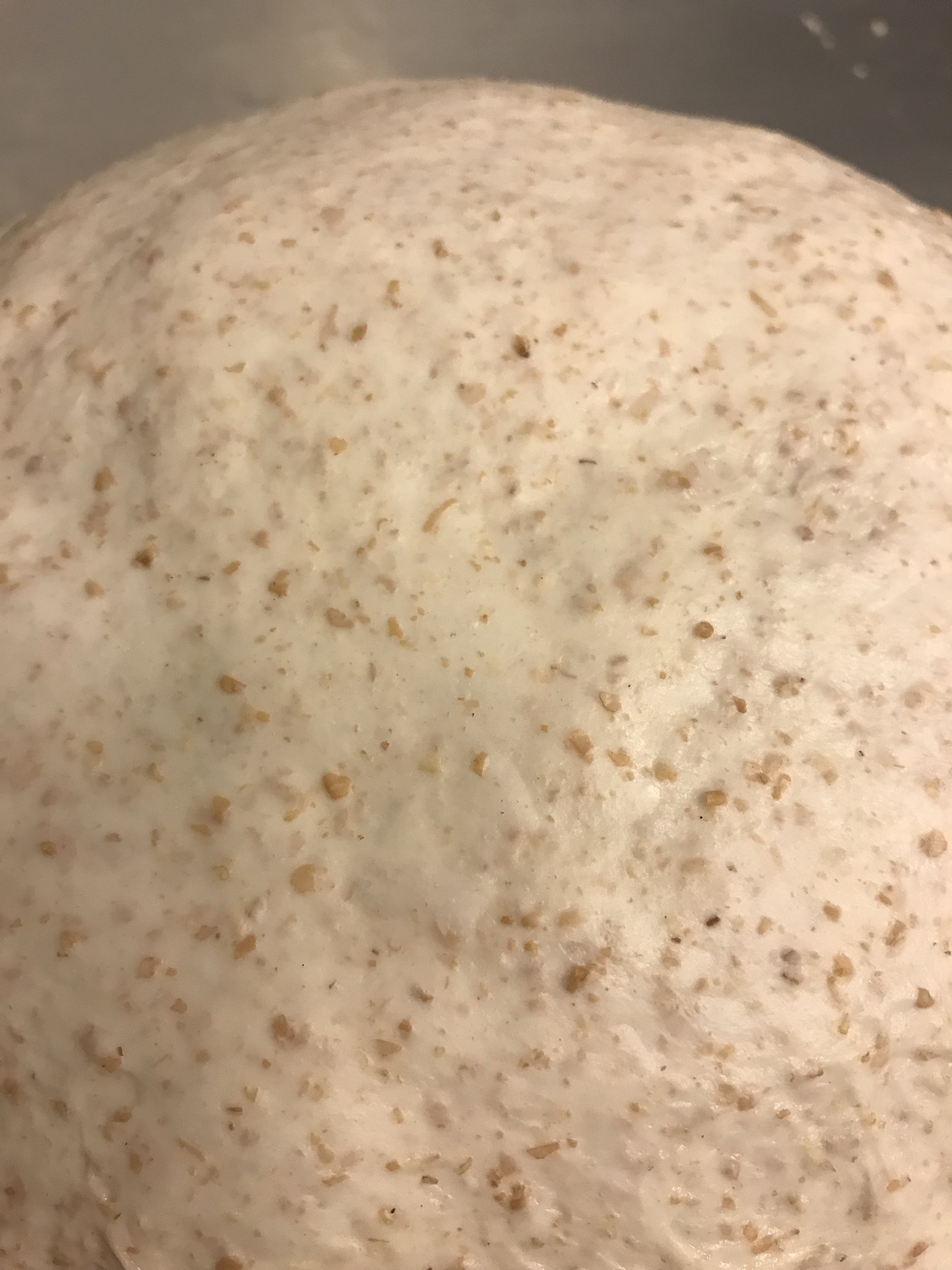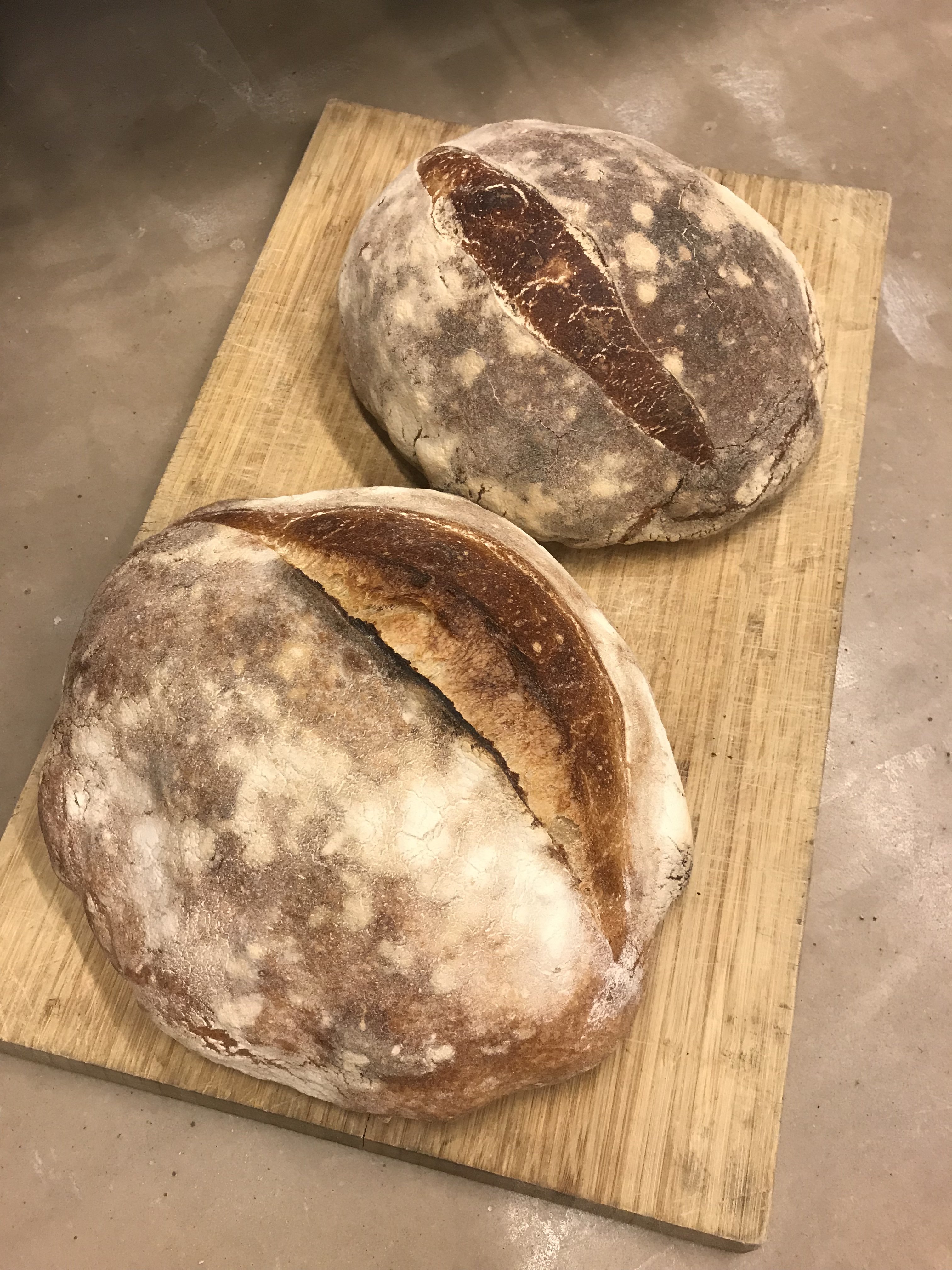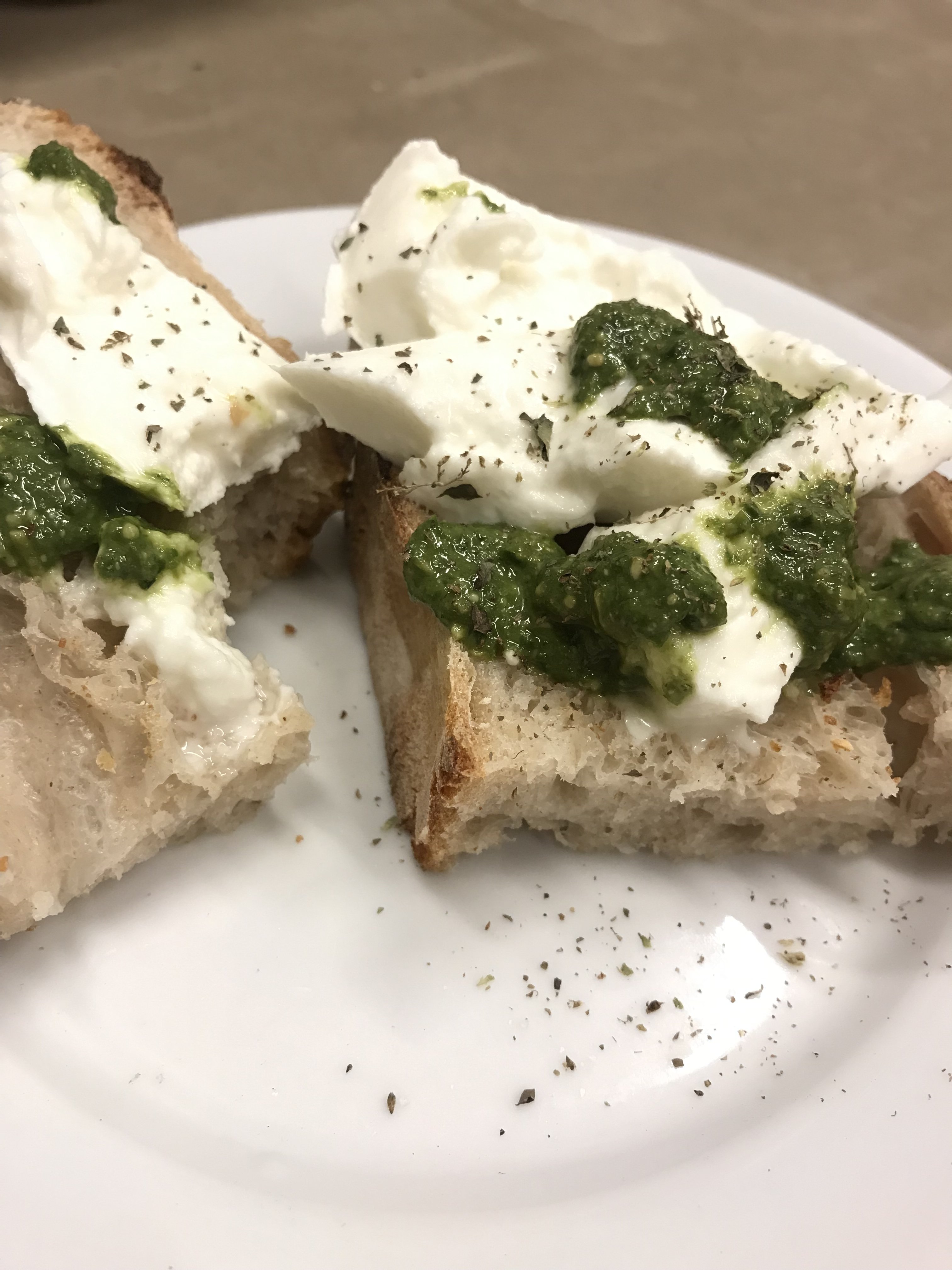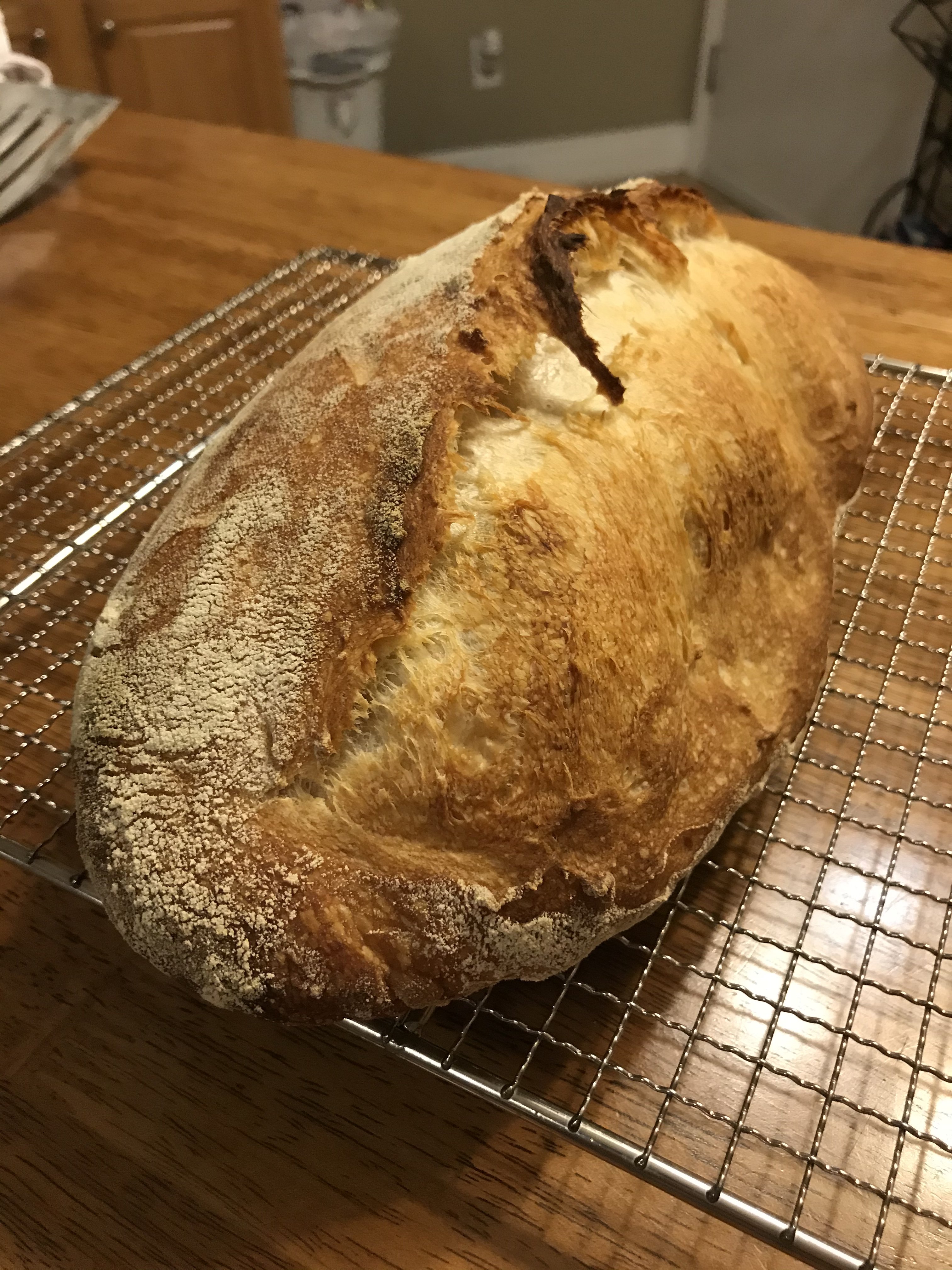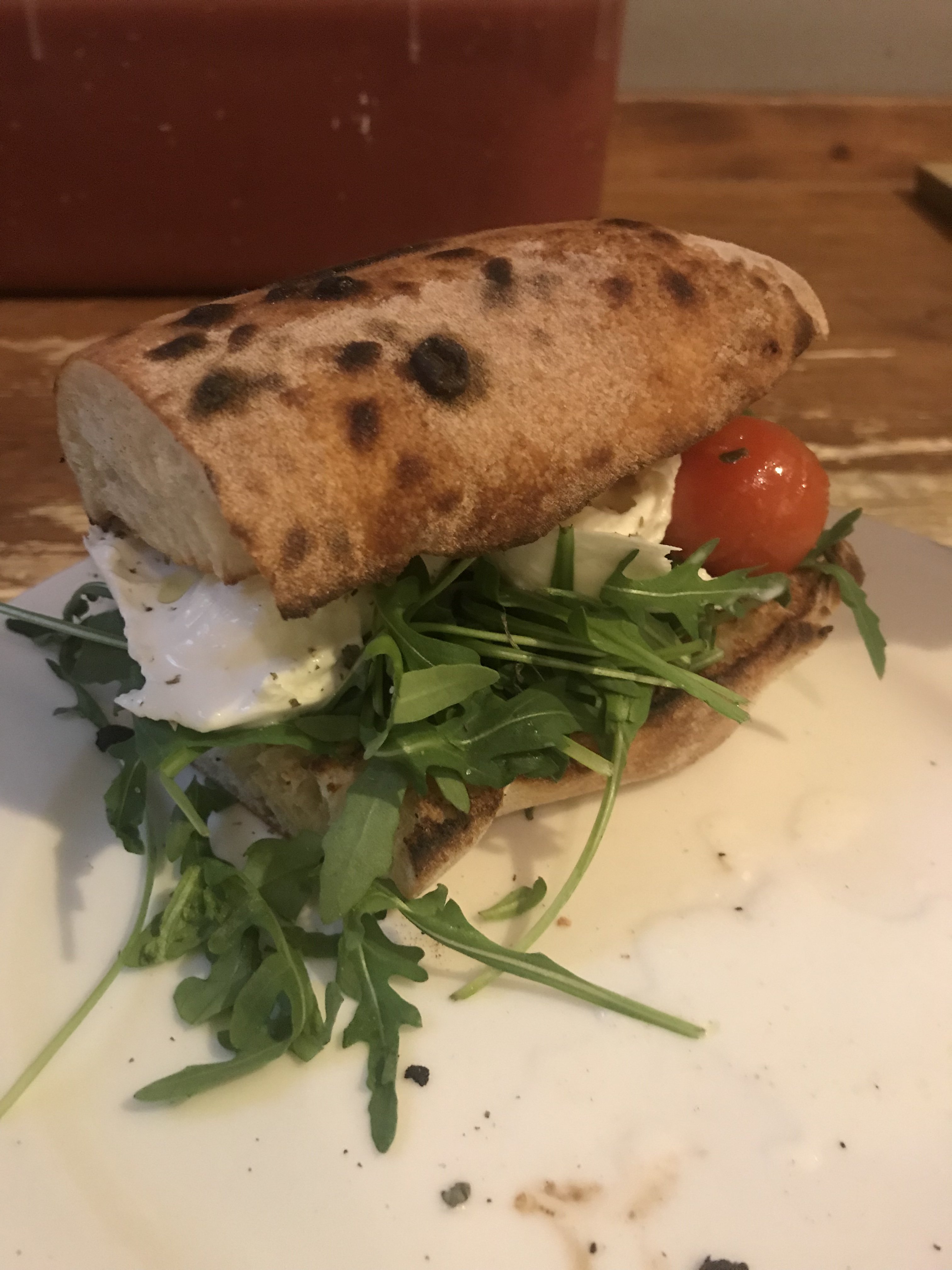You are using an out of date browser. It may not display this or other websites correctly.
You should upgrade or use an alternative browser.
You should upgrade or use an alternative browser.
Homemade Bread Thread
- Thread starter deadfall
- Start date

Help Support Homebrew Talk:
This site may earn a commission from merchant affiliate
links, including eBay, Amazon, and others.
Curtis2010
Well-Known Member
- Joined
- Dec 6, 2011
- Messages
- 1,875
- Reaction score
- 640
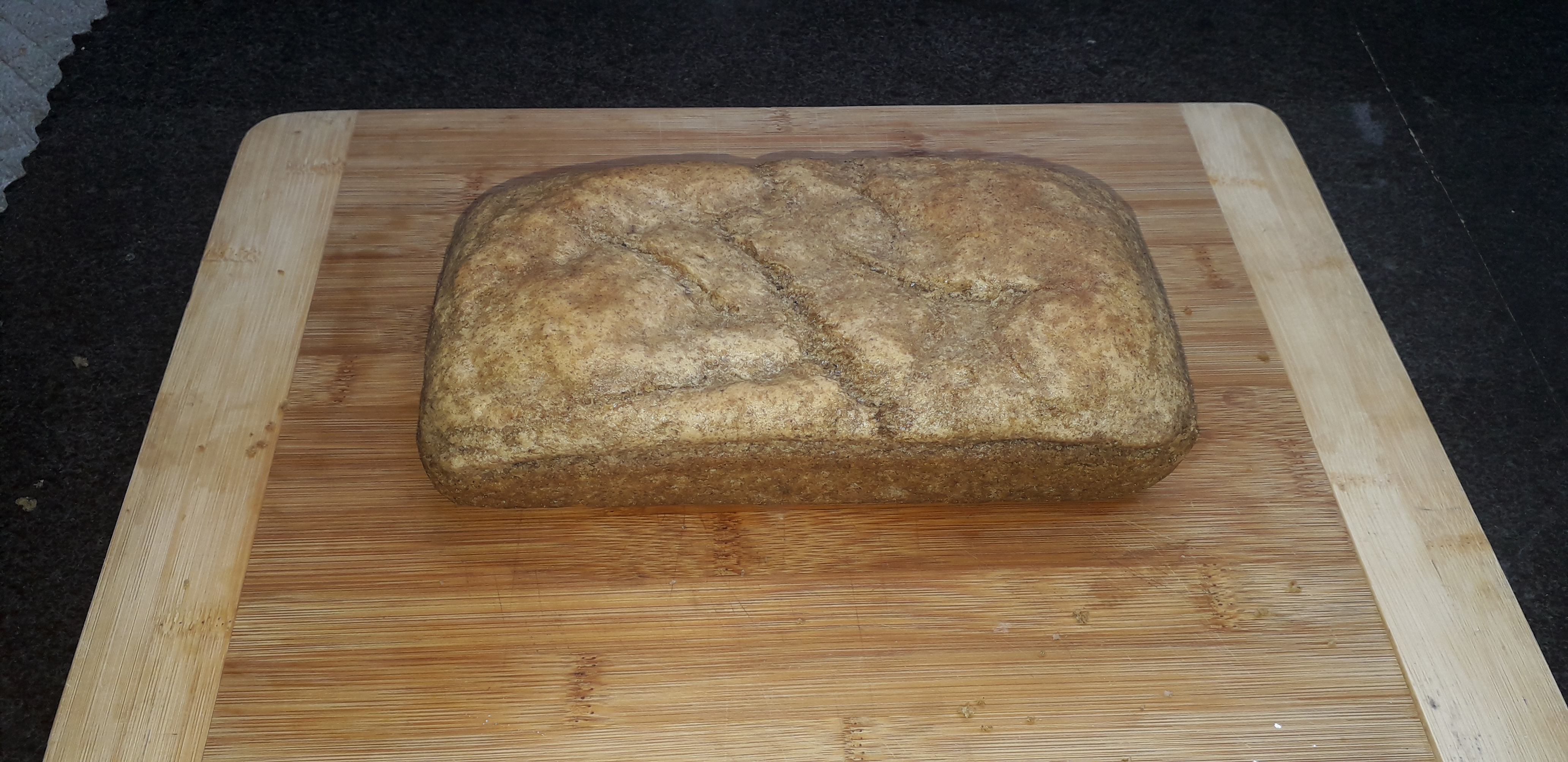
Curtis2010
Well-Known Member
- Joined
- Dec 6, 2011
- Messages
- 1,875
- Reaction score
- 640

View attachment 674767 Fresh loaf of bread for the morning. A blend of about 70% GP and 30% lentil flours. Overnight fermentation. Popped in the oven about 0430.
This flour blend makes for a tasty, but dense, loaf. My try it again with about 10% lentil (we like the flavor) and see how that comes out.
user 246304
Well-Known Member
- Joined
- Aug 24, 2017
- Messages
- 8,290
- Reaction score
- 9,850
View attachment 674761 View attachment 674762 View attachment 674763 View attachment 674764 View attachment 674765 View attachment 674766 the three latest breads I baked. It’s about 60% white wheat flour and 40% full grain.
Enjoying it with buffalo cheese and home made pesto
Beautiful, Dave. A very eager starter. What's your starter composition, hydration? Dough hydration?
Beautiful, Dave. A very eager starter. What's your starter composition, hydration? Dough hydration?
It’s white flour starter. 50/50 flour/water. For the dough I used 255g of white flour and 170g of full grain wheat flour. 150g of starter and 300g of water. I don’t know about percents.
I mostly use italian flour - got a lot of them with ended exp. date so I’m feeding my starter and making bread with them.
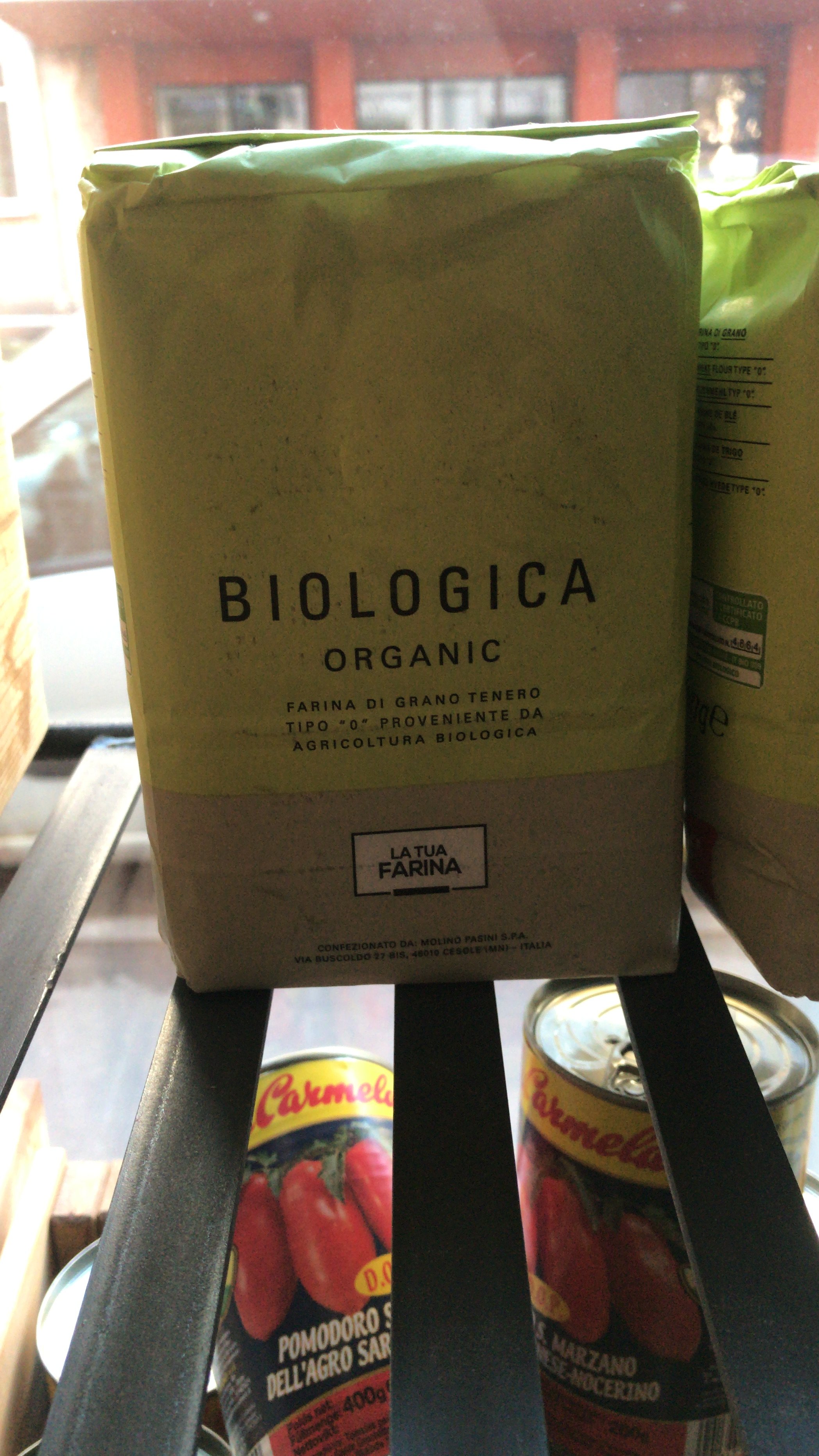
applescrap
Be the ball!
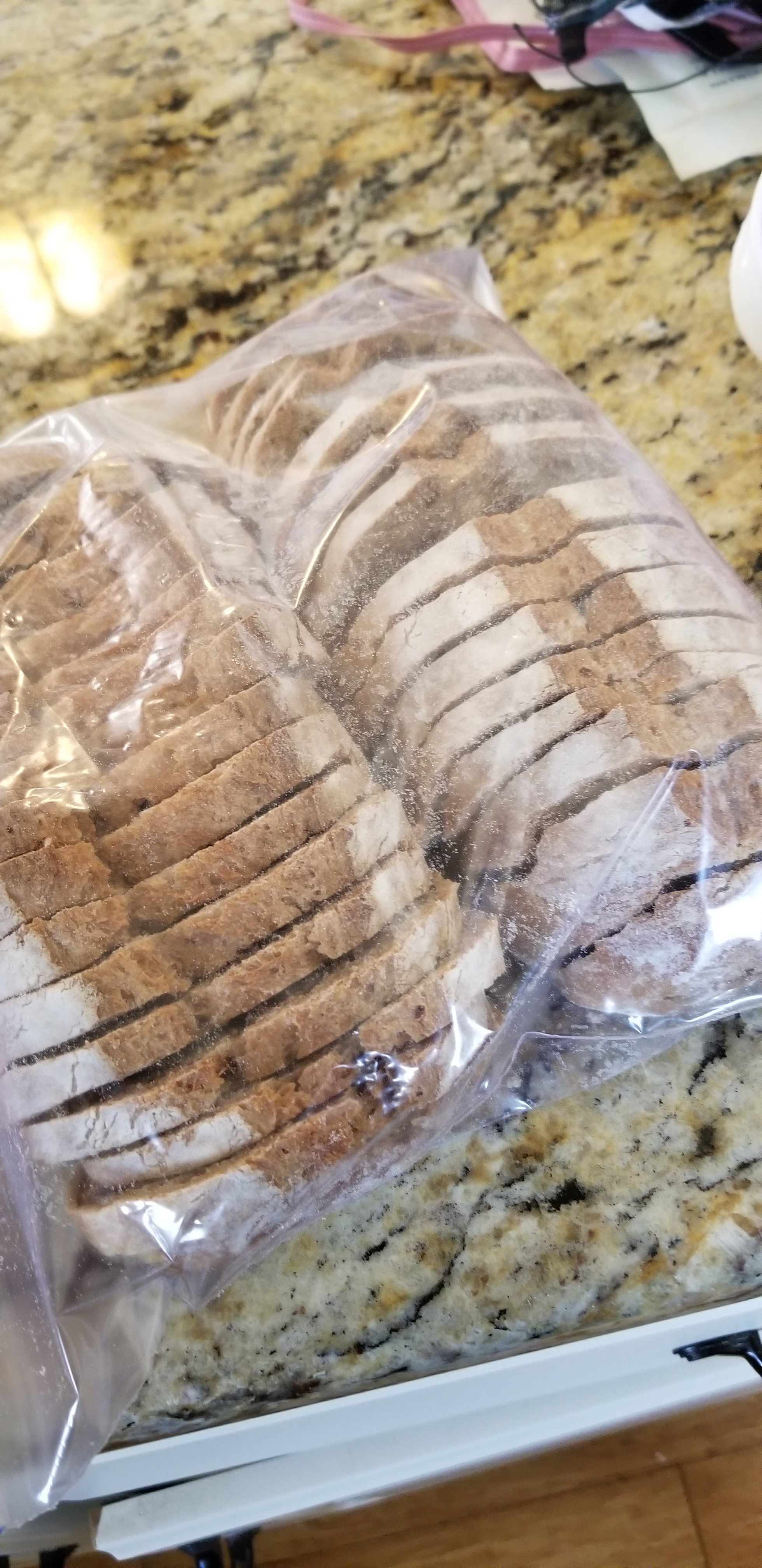
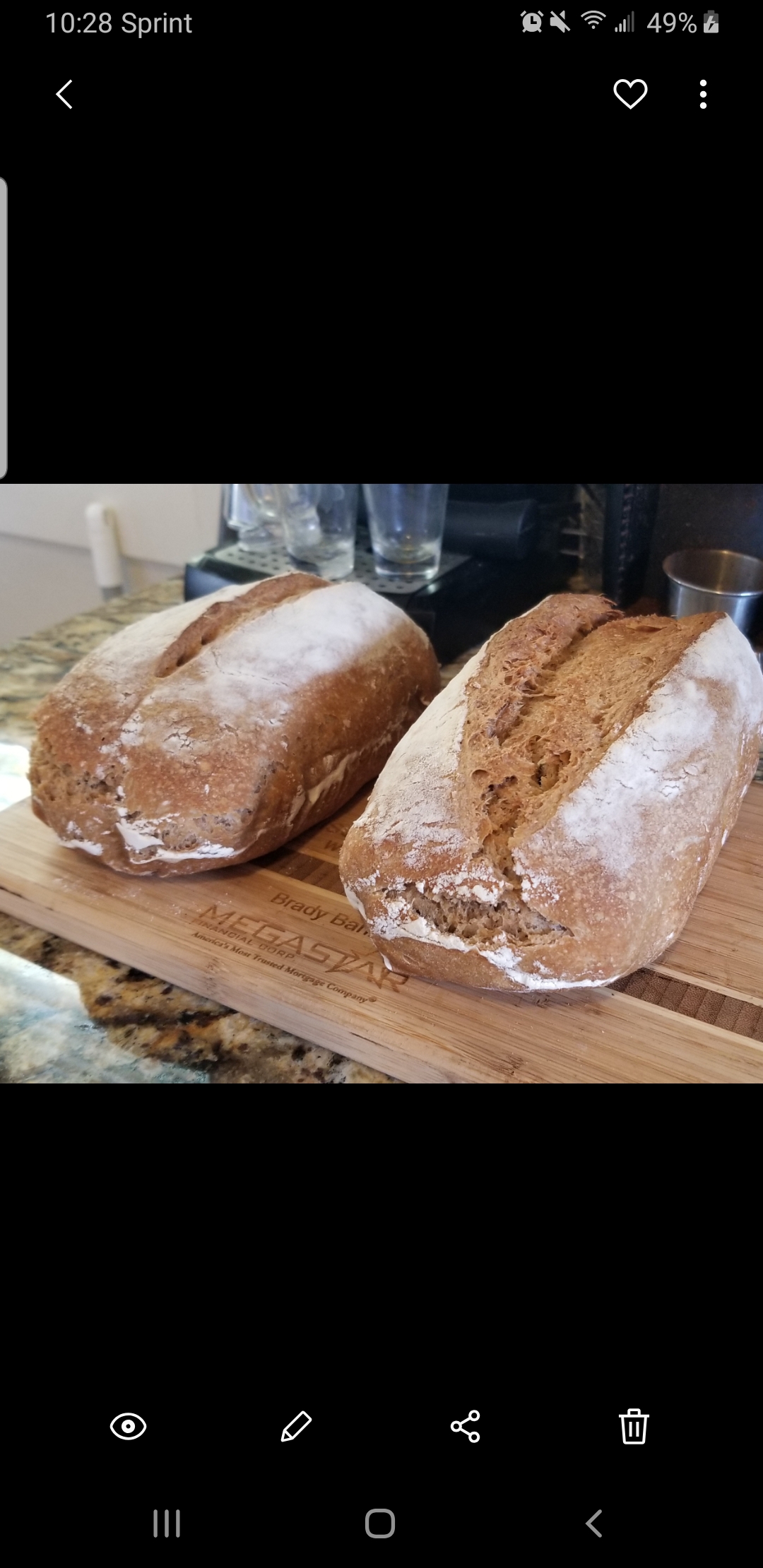


$22.00 ($623.23 / Ounce)
AMZLMPKNTW Ball Lock Sample Faucet 30cm Reinforced Silicone Hose Secondary Fermentation Homebrew Kegging joyful
无为中南商贸有限公司

$44.99
$49.95
Craft A Brew - Mead Making Kit – Reusable Make Your Own Mead Kit – Yields 1 Gallon of Mead
Craft a Brew

$176.97
1pc Commercial Keg Manifold 2" Tri Clamp,Ball Lock Tapping Head,Pressure Gauge/Adjustable PRV for Kegging,Fermentation Control
hanhanbaihuoxiaoshoudian

$159.99 ($26.66 / Count)
3M High Flow Series System BREW120-MS, 5616001, For Brewed Coffee and Hot Tea, Valve-in-Head Design
SpaceCityProviders

$719.00
$799.00
EdgeStar KC2000TWIN Full Size Dual Tap Kegerator & Draft Beer Dispenser - Black
Amazon.com

$33.99 ($17.00 / Count)
$41.99 ($21.00 / Count)
2 Pack 1 Gallon Large Fermentation Jars with 3 Airlocks and 2 SCREW Lids(100% Airtight Heavy Duty Lid w Silicone) - Wide Mouth Glass Jars w Scale Mark - Pickle Jars for Sauerkraut, Sourdough Starter
Qianfenie Direct

$28.98
Five Star - 6022b_ - Star San - 32 Ounce - High Foaming Sanitizer
Great Fermentations of Indiana

$7.79 ($7.79 / Count)
Craft A Brew - LalBrew Voss™ - Kveik Ale Yeast - For Craft Lagers - Ingredients for Home Brewing - Beer Making Supplies - (1 Pack)
Craft a Brew

$53.24
1pc Hose Barb/MFL 1.5" Tri Clamp to Ball Lock Post Liquid Gas Homebrew Kegging Fermentation Parts Brewer Hardware SUS304(Liquid Hose Barb)
yunchengshiyanhuqucuichendianzishangwuyouxiangongsi

$58.16
HUIZHUGS Brewing Equipment Keg Ball Lock Faucet 30cm Reinforced Silicone Hose Secondary Fermentation Homebrew Kegging Brewing Equipment
xiangshuizhenzhanglingfengshop

$53.24
1pc Hose Barb/MFL 1.5" Tri Clamp to Ball Lock Post Liquid Gas Homebrew Kegging Fermentation Parts Brewer Hardware SUS304(Gas MFL)
Guangshui Weilu You Trading Co., Ltd

$479.00
$559.00
EdgeStar KC1000SS Craft Brew Kegerator for 1/6 Barrel and Cornelius Kegs
Amazon.com

$10.99 ($31.16 / Ounce)
Hornindal Kveik Yeast for Homebrewing - Mead, Cider, Wine, Beer - 10g Packet - Saccharomyces Cerevisiae - Sold by Shadowhive.com
Shadowhive
![Craft A Brew - Safale S-04 Dry Yeast - Fermentis - English Ale Dry Yeast - For English and American Ales and Hard Apple Ciders - Ingredients for Home Brewing - Beer Making Supplies - [1 Pack]](https://m.media-amazon.com/images/I/41fVGNh6JfL._SL500_.jpg)
$6.95 ($17.38 / Ounce)
$7.47 ($18.68 / Ounce)
Craft A Brew - Safale S-04 Dry Yeast - Fermentis - English Ale Dry Yeast - For English and American Ales and Hard Apple Ciders - Ingredients for Home Brewing - Beer Making Supplies - [1 Pack]
Hobby Homebrew

$76.92 ($2,179.04 / Ounce)
Brewing accessories 1.5" Tri Clamp to Ball Lock Post Liquid Gas Homebrew Kegging Fermentation Parts Brewer Hardware SUS304 Brewing accessories(Gas Hose Barb)
chuhanhandianzishangwu
- Joined
- Feb 29, 2016
- Messages
- 502
- Reaction score
- 316
deadwolfbones
Well-Known Member
Seeded sandwich rye with 40% pickle juice:
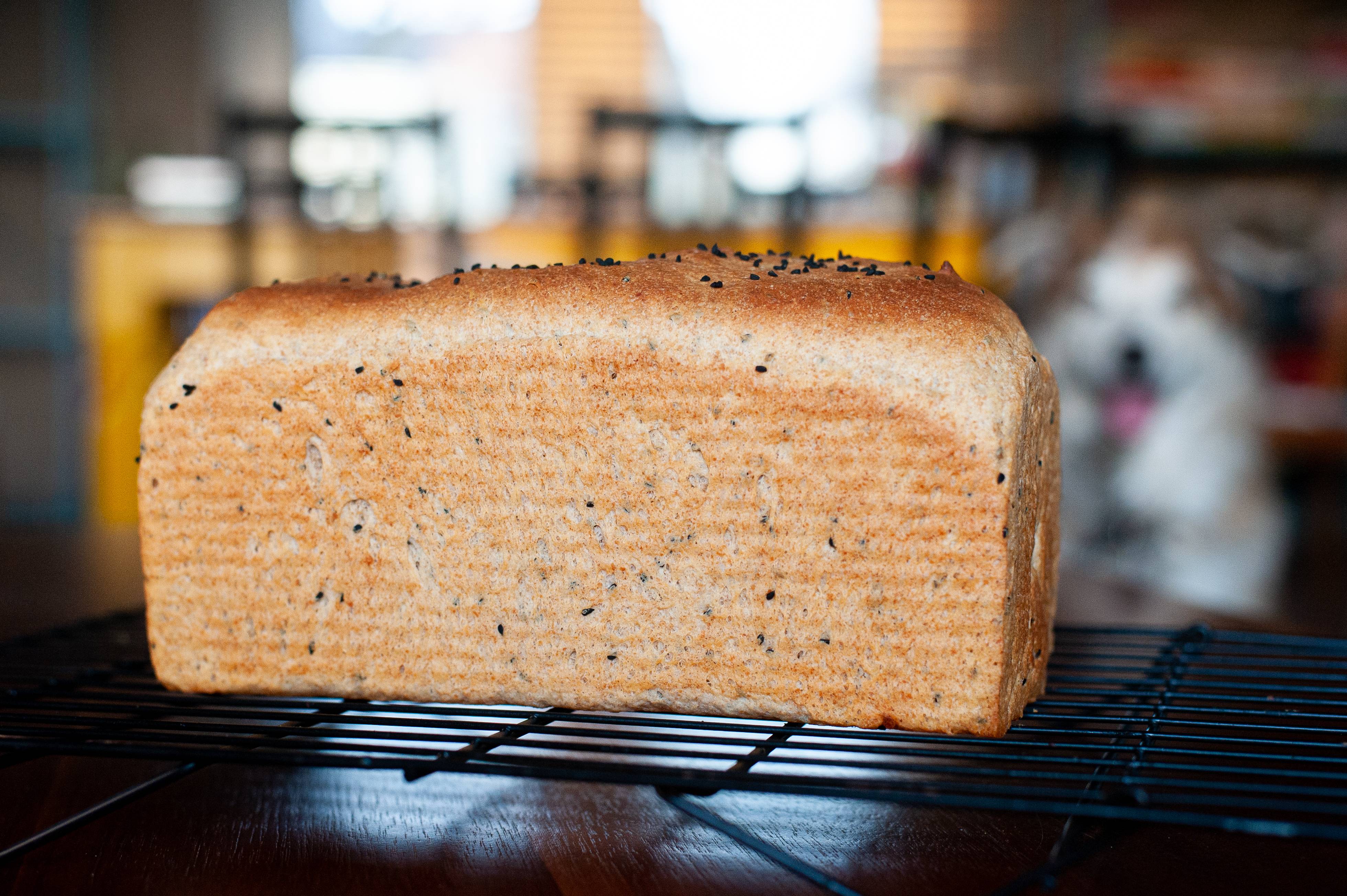
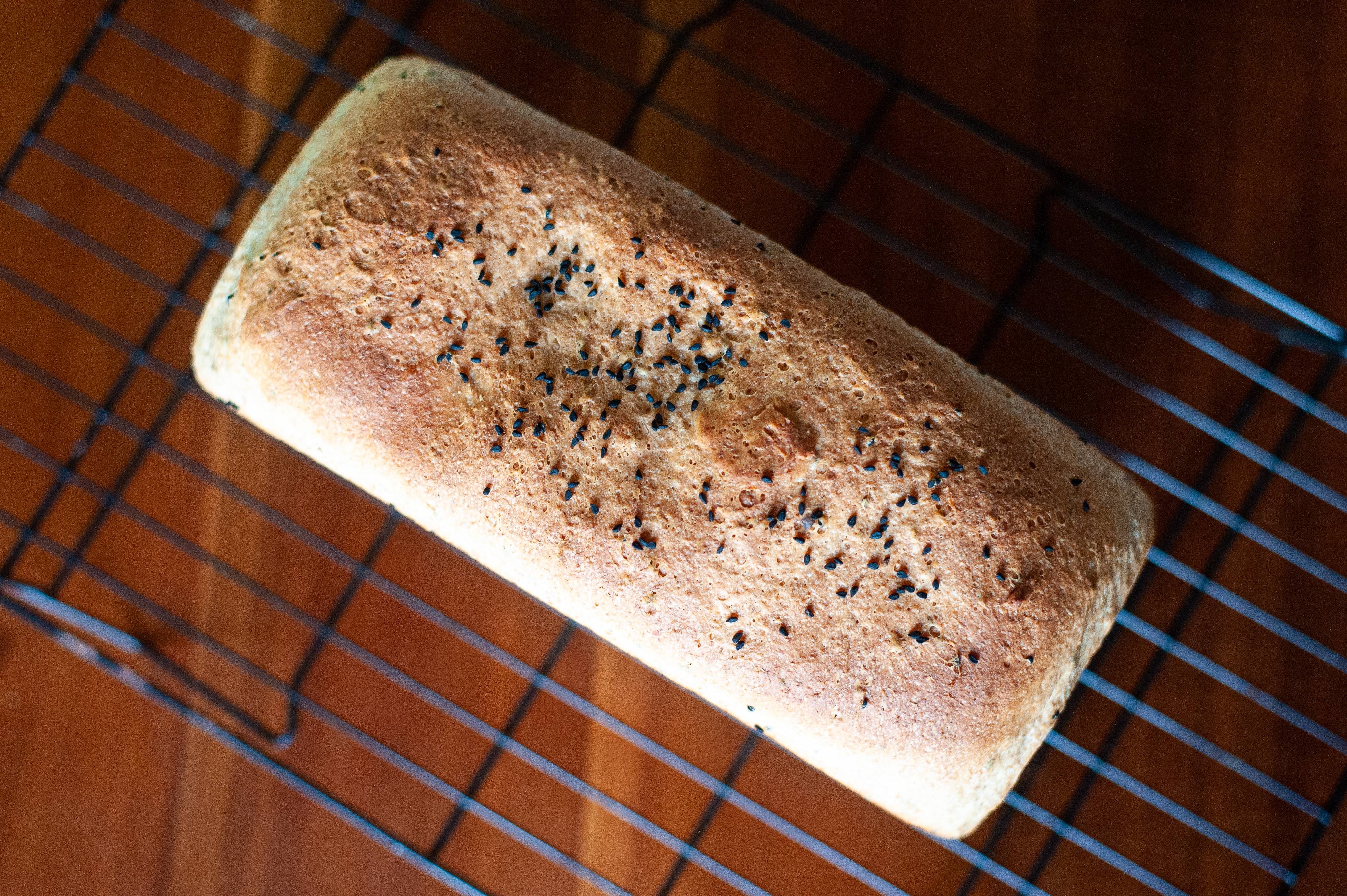
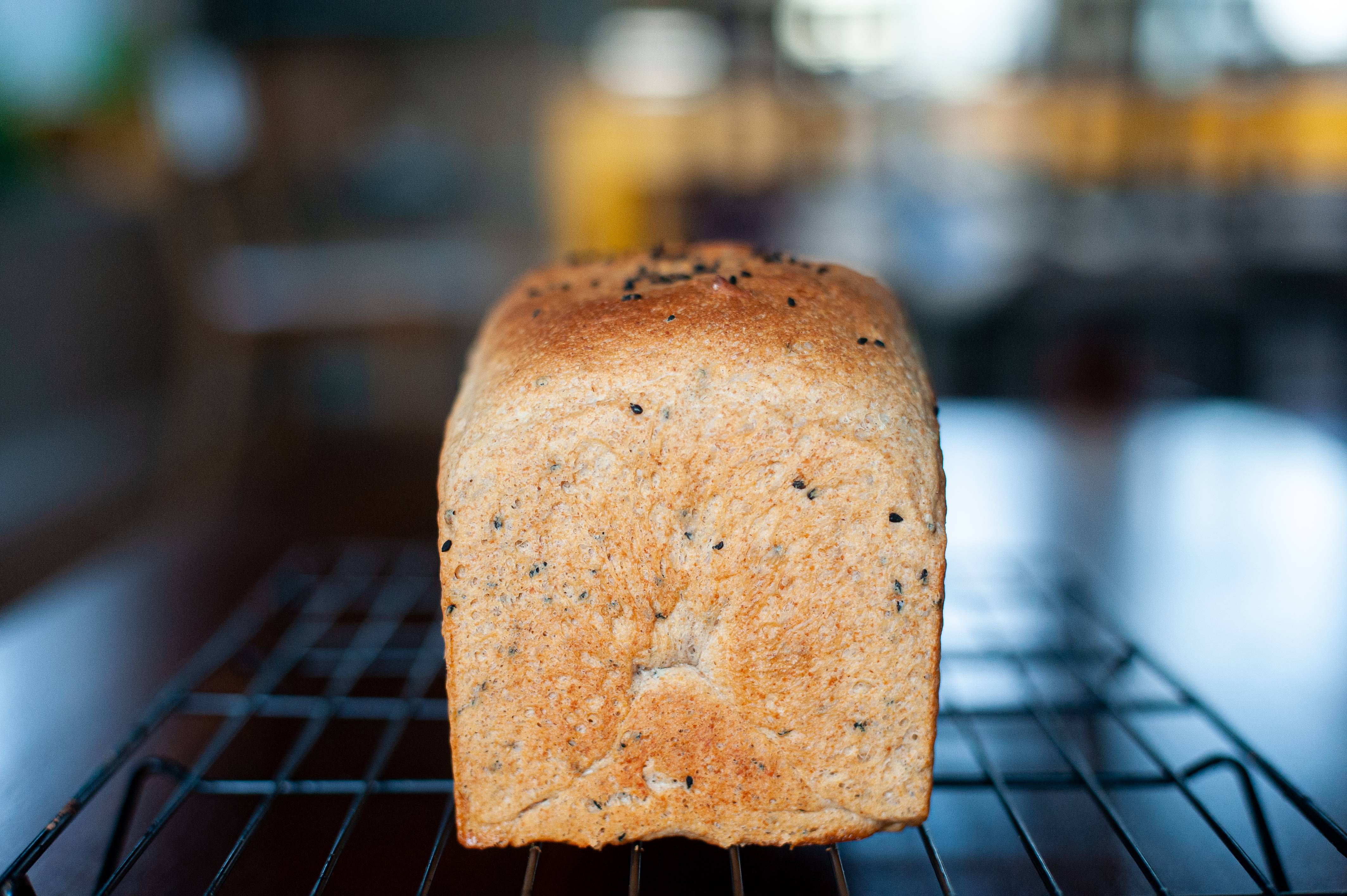
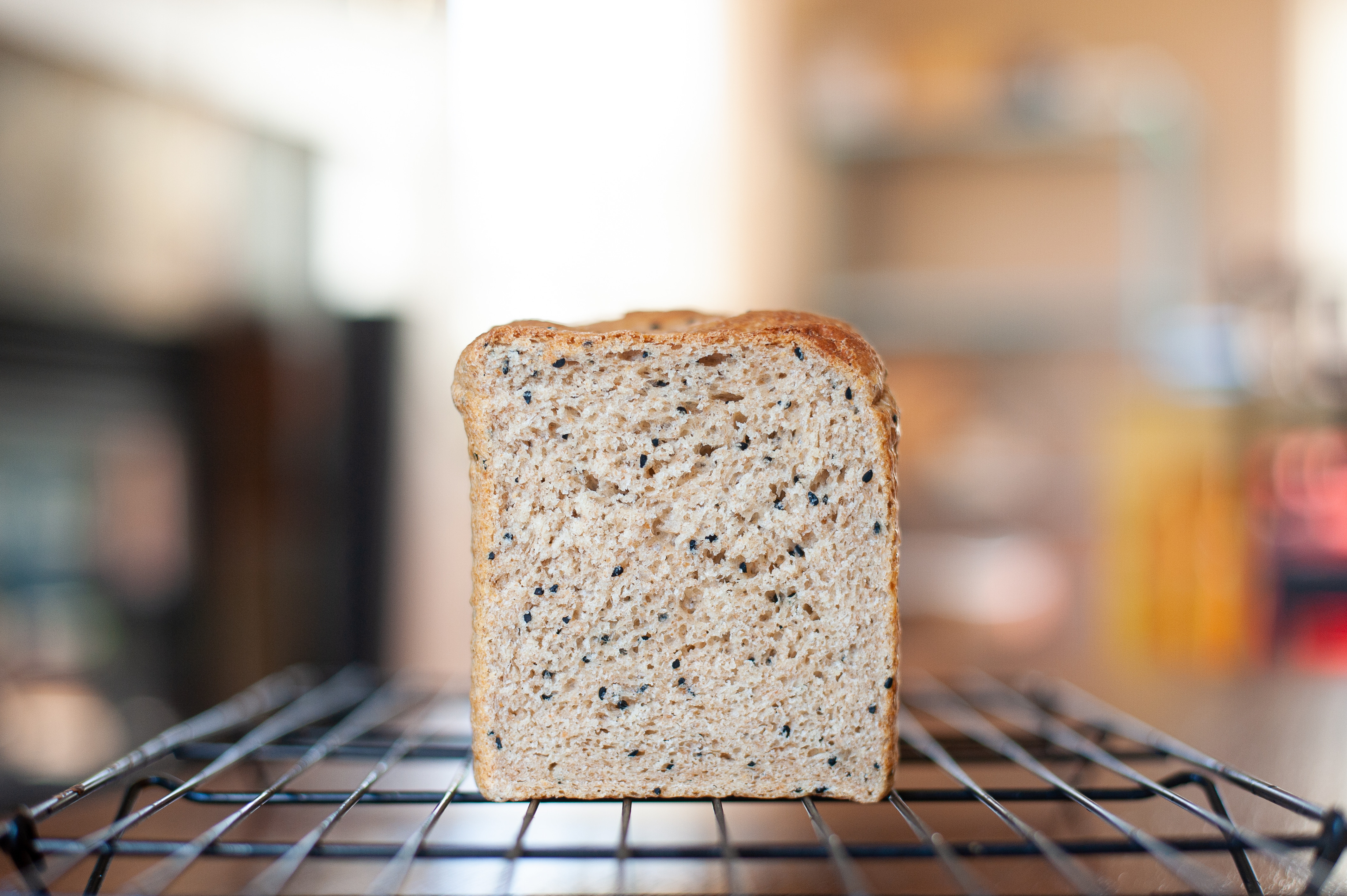




deadwolfbones
Well-Known Member
Here's a sourdough loaf with furikake(!) mixed into the dough, plus more fried shallots and mixed sesame seeds on top.
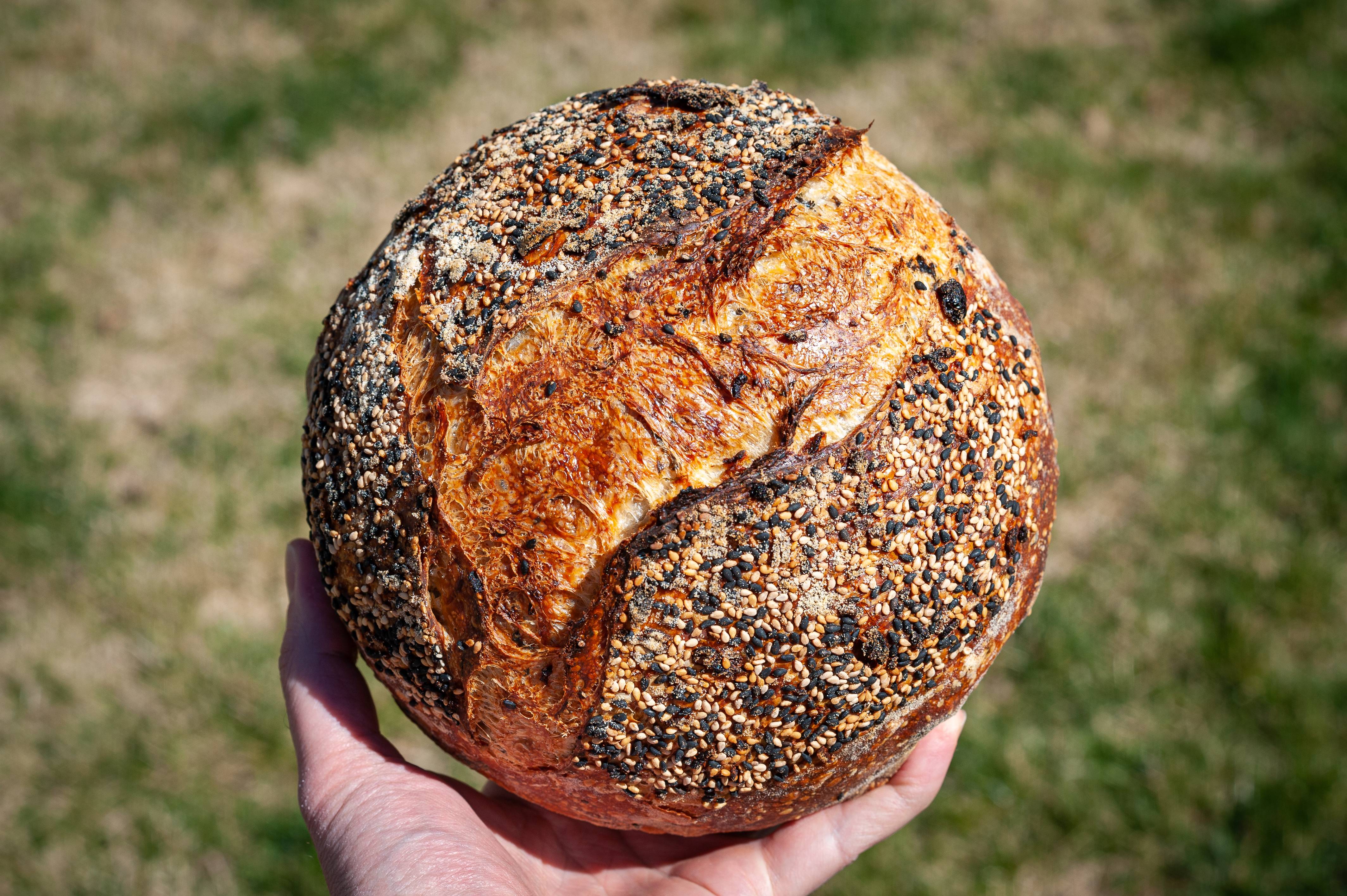
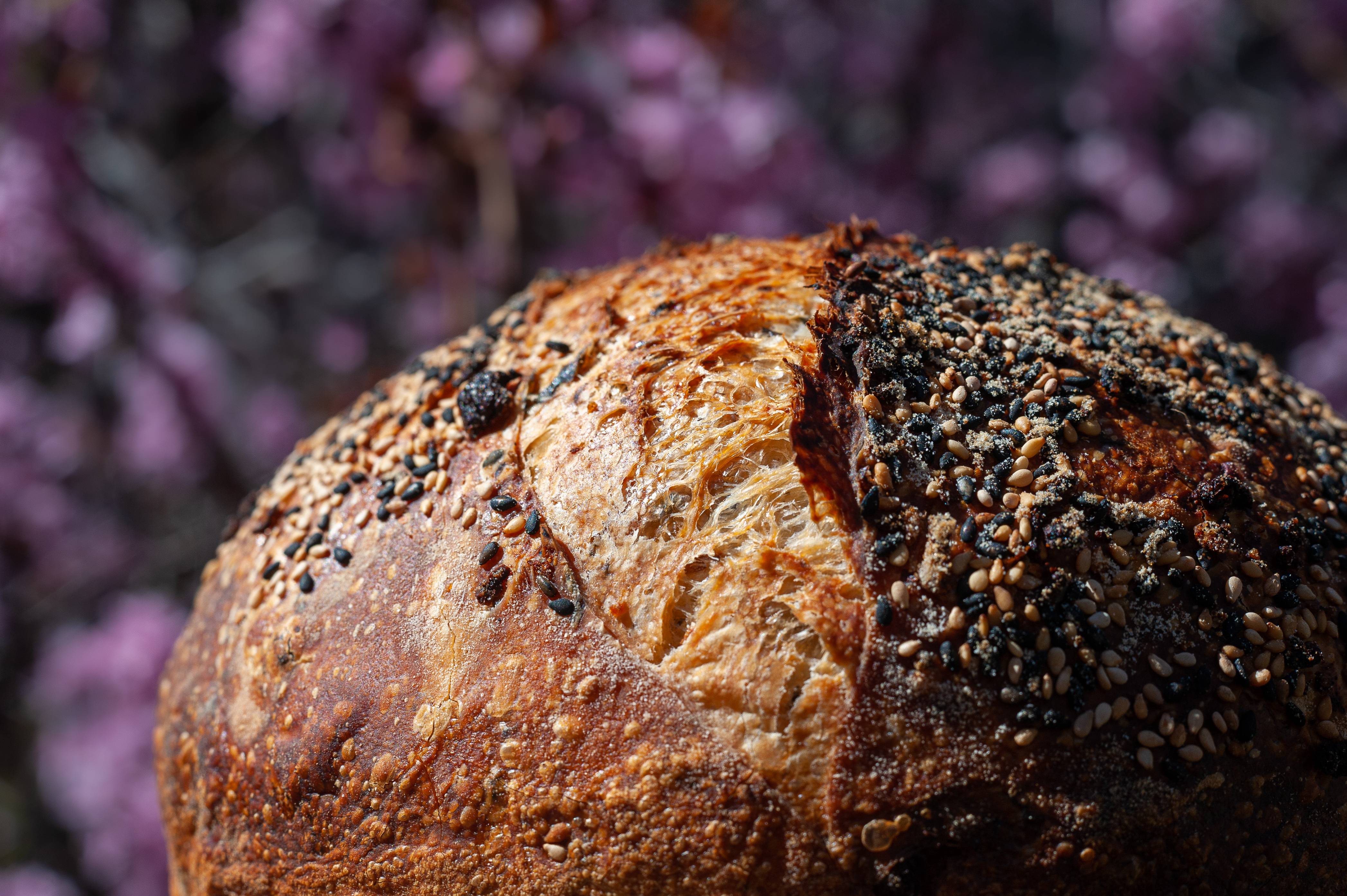




applescrap
Be the ball!
Tried a loaf in air fryer. Great spring but not right.
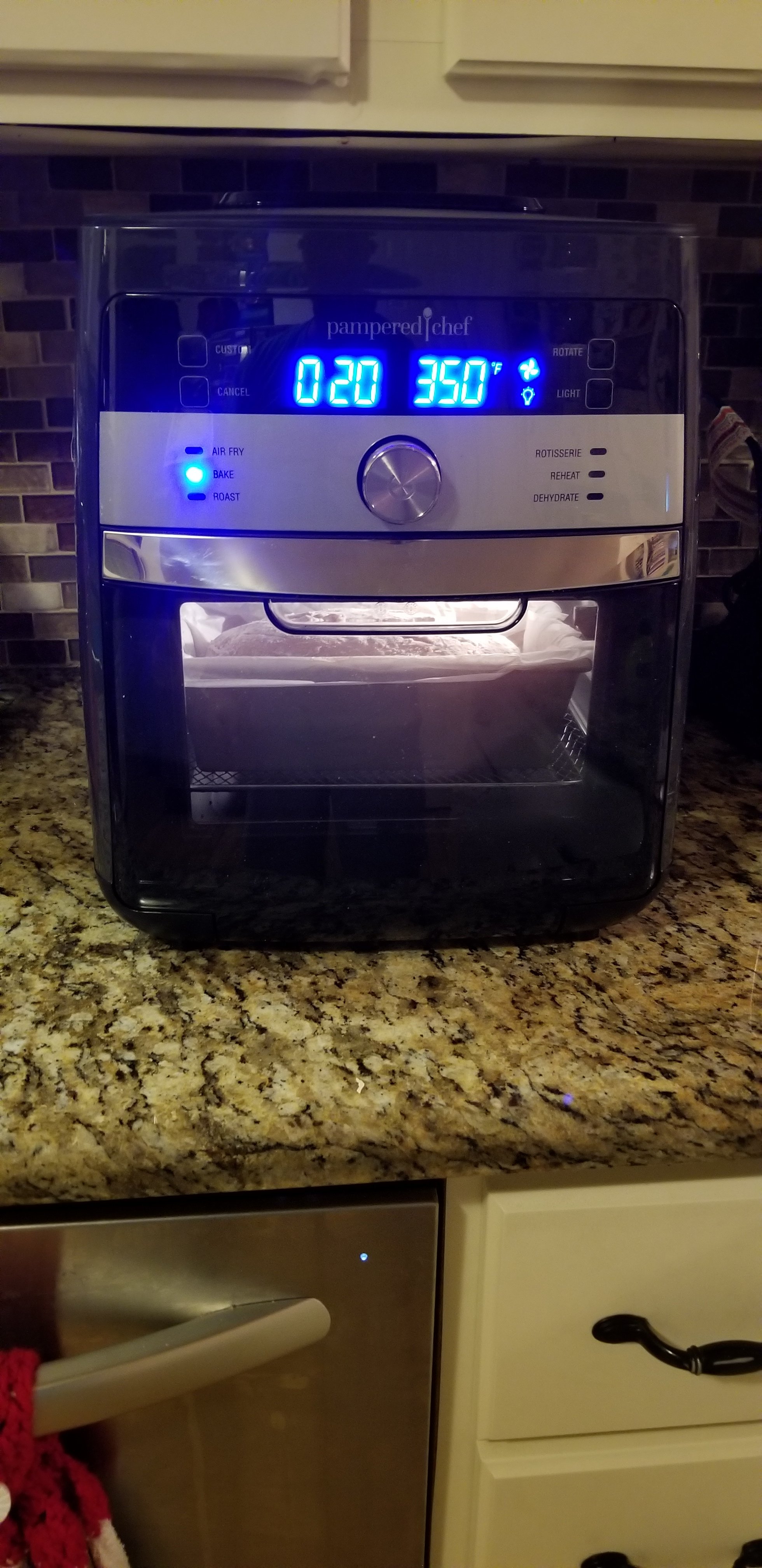

Robert65
Major Obvious (recently promoted)
Fresh from the oven...

Realized I hadn't made sourdough loaf in a while. 100% KAF AP, stiff levain, fairly wet but don't ask me the final hydration, I mix by hand.

Realized I hadn't made sourdough loaf in a while. 100% KAF AP, stiff levain, fairly wet but don't ask me the final hydration, I mix by hand.
TandemTails
Well-Known Member
Something a little different this time. I made some pesto a few days ago and had some left over after dinner. Figured I'd use it in some bread.
Full recipe and more pics here: https://alegrebread.com/2020/04/16/pesto-swirl-sourdough-w-sun-dried-tomatoes-and-pecorino-romano/
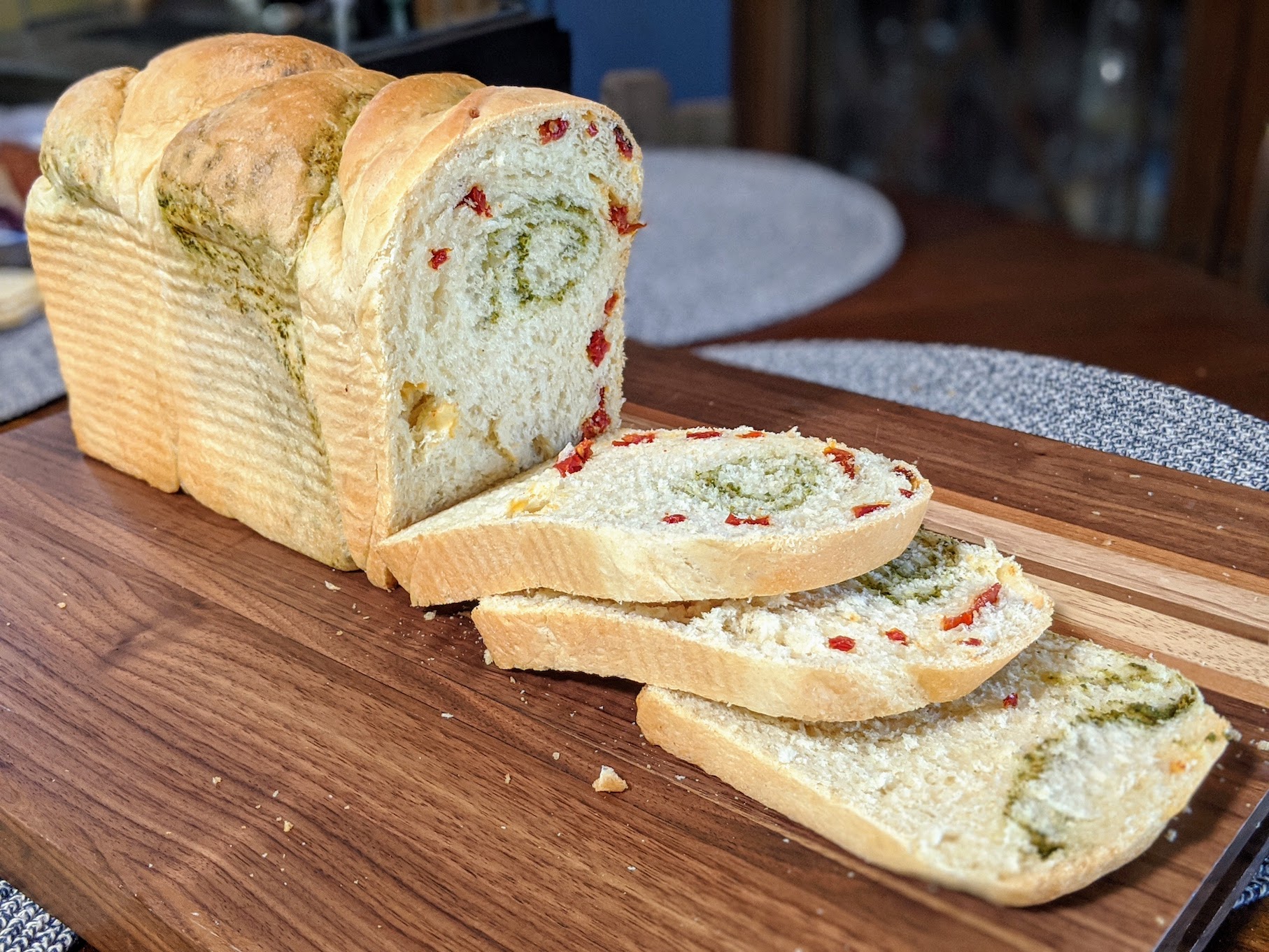
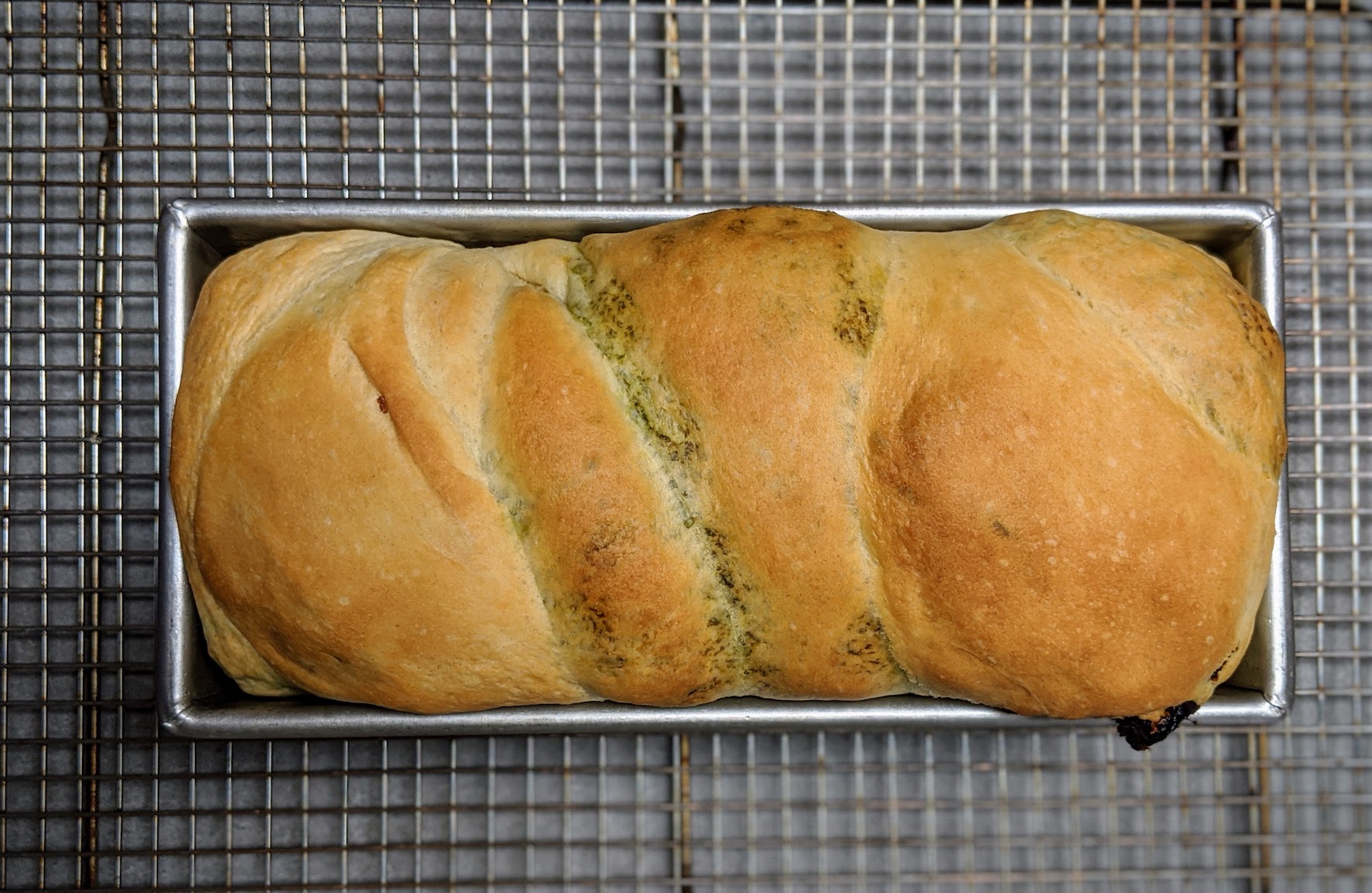
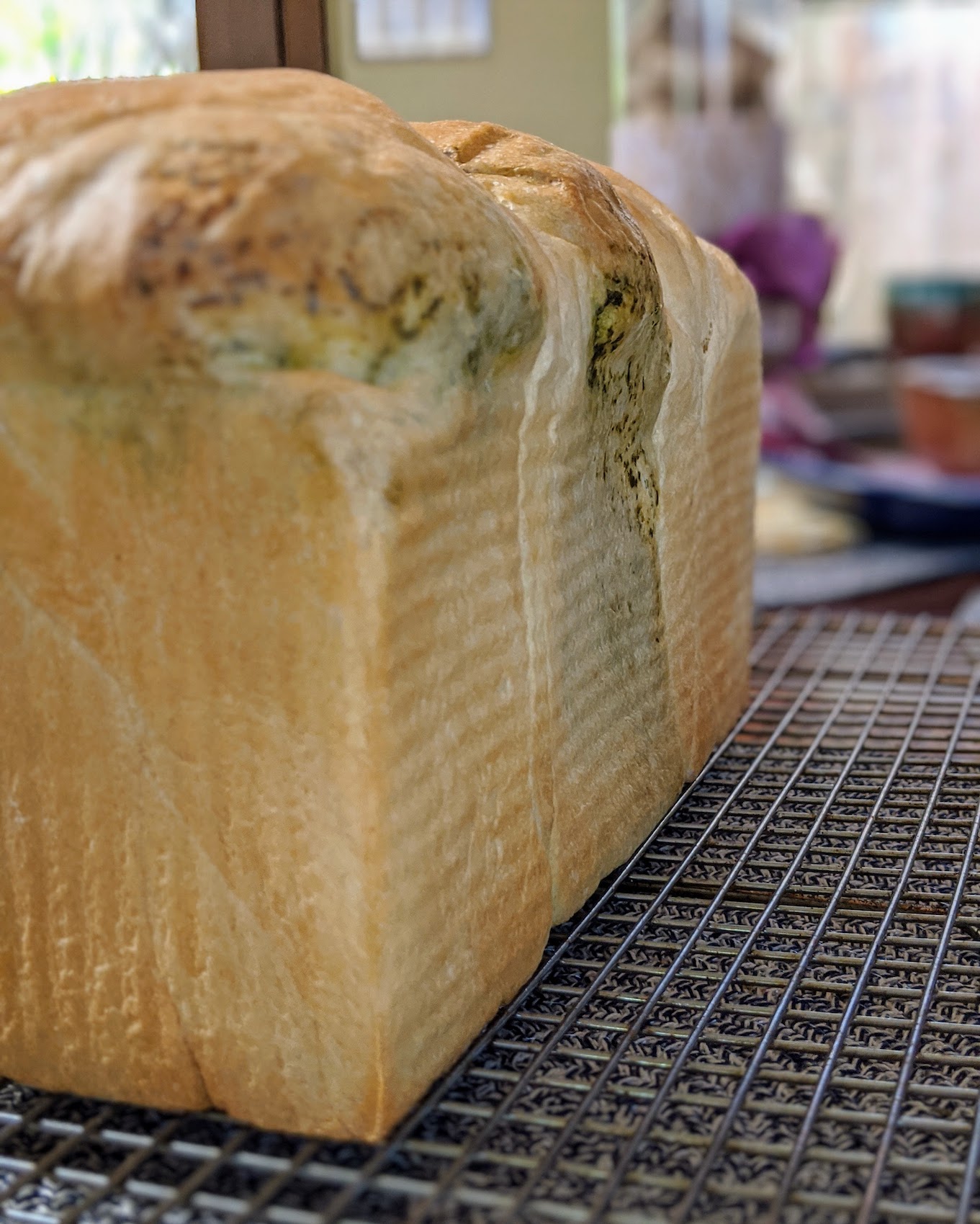
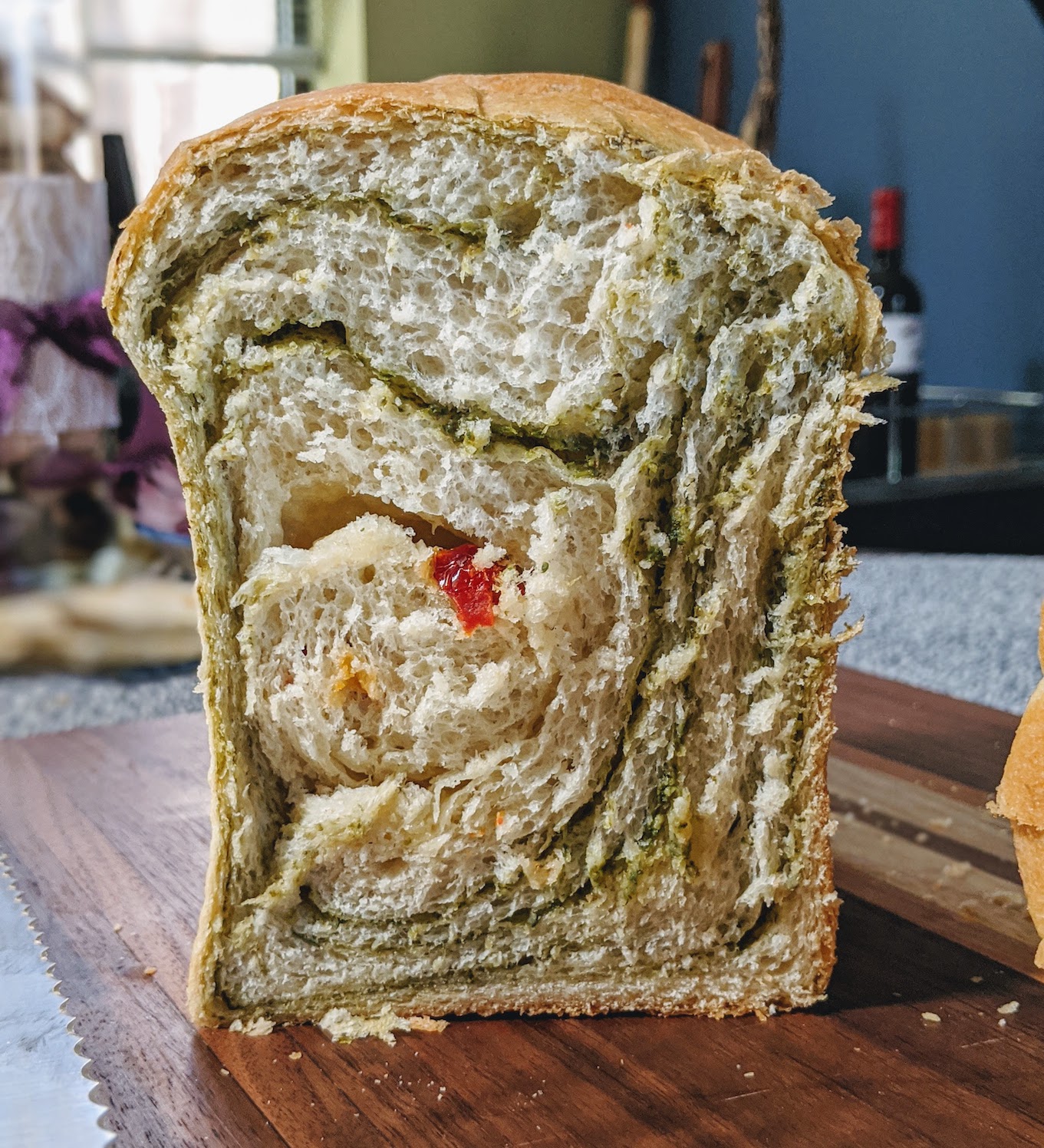
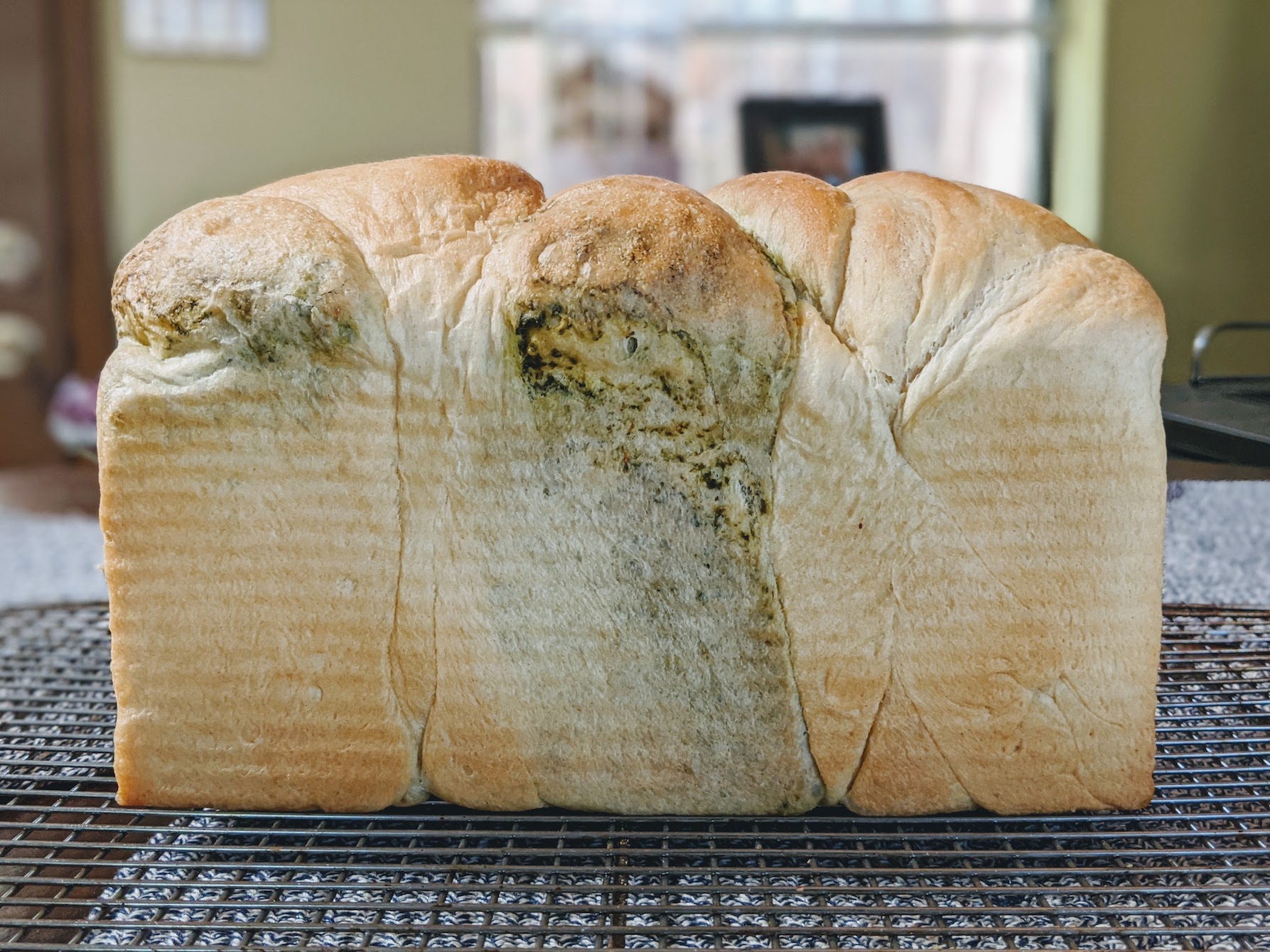
Full recipe and more pics here: https://alegrebread.com/2020/04/16/pesto-swirl-sourdough-w-sun-dried-tomatoes-and-pecorino-romano/





Beernik
Well-Known Member
Making my third attempt to use a stiff levain for making NY style bagels. First attempt was okay but not stellar. Second attempt was a failure.
The third attempt won’t be ready to boil until around lunchtime tomorrow.
The third attempt won’t be ready to boil until around lunchtime tomorrow.
applescrap
Be the ball!
https://www.kingarthurflour.com/recipes/sourdough-starter-recipe
My friend asked me about sourdough. I need some help from you all to help him. Is this the way to start? Thanks, any thoughts tips appreciated very much.
My friend asked me about sourdough. I need some help from you all to help him. Is this the way to start? Thanks, any thoughts tips appreciated very much.
Robert65
Major Obvious (recently promoted)
I've done it that way, starting with whole grain flour. The argument in favor is that the larger portion of the outer layer of the grain (bran) carries a larger inoculating population of yeast and bacteria, which is true, and the extra enzymes, minerals, and other nutrients in the germ and bran will jump start things. Also true. But you can also just start with all unbleached flour, which is now my preference (it has, I admit, been more years than I can count since I started my current sourdough, but thus is how I did it.) The argument here is that it is best to start a culture in the conditions you expect it to ultimately thrive in, and most of us regularly feed our sourdough unbleached flour.
The upshot is, you can start a culture using any flour you like, any hydration you like. What is critical is that the water be non chlorinated so as not to kill the few bugs you have, and to keep it loosely covered so as to allow oxygen access, but to keep bugs from the environment from gettng in as much as possible -- contrary to popular misconceptions, the bugs we want are present on the grain, just as traditional winemaking uses the yeast on the grape skin.
So there's more than one way to do it. But short story long, can't go wrong with advice from King Arthur. What should always be avoided is adding anything but some kind of flour and water. Extraneous sources of yeast and nutrients, like fruits, acids, etc., may yield comfortingly rapid onset of visible activity, but are not setting up conditions selective of organisms that will thrive in the long term in conditions we provide.
The absolute short version is: mix flour and water and cover loosely. When it has risen and fallen, however long it takes, discard some and add more flour and water. Repeat, repeat, repeat....
The upshot is, you can start a culture using any flour you like, any hydration you like. What is critical is that the water be non chlorinated so as not to kill the few bugs you have, and to keep it loosely covered so as to allow oxygen access, but to keep bugs from the environment from gettng in as much as possible -- contrary to popular misconceptions, the bugs we want are present on the grain, just as traditional winemaking uses the yeast on the grape skin.
So there's more than one way to do it. But short story long, can't go wrong with advice from King Arthur. What should always be avoided is adding anything but some kind of flour and water. Extraneous sources of yeast and nutrients, like fruits, acids, etc., may yield comfortingly rapid onset of visible activity, but are not setting up conditions selective of organisms that will thrive in the long term in conditions we provide.
The absolute short version is: mix flour and water and cover loosely. When it has risen and fallen, however long it takes, discard some and add more flour and water. Repeat, repeat, repeat....
applescrap
Be the ball!
Thanks so much Robert. Great, now I am curious. How much flour and water. Cup flour and half water or just blow and go, dump some starter add some flour and water too.....I assume a fairly wet, but not watery consistency. Thanks again.
Robert65
Major Obvious (recently promoted)
Thanks so much Robert. Great, now I am curious. How much flour and water. Cup flour and half water or just blow and go, dump some starter add some flour and water too.....I assume a fairly wet, but not watery consistency. Thanks again.
Yeah, my point is it doesn't really matter that much, bugs wanna grow, but a loose, batter like consistency is easier to work with, and with more water and, as a result, easier bubbling of CO2 out and O2 diffusing in, the culture will grow faster. So I'd suggest anything from 100% to 150% hydration initially, and 150% is probably very close to equal parts by volume.
Beernik
Well-Known Member
The method I used is similar to the King Arthur method. However, the most exotic flour I can find right now is unbleached. I think that’s contributed to how slow mine has come along.
Robert65
Major Obvious (recently promoted)
Don't worry, be patient, it will get there. I honestly think you'll be better off in the end. It's a marathon, not a sprint.The method I used is similar to the King Arthur method. However, the most exotic flour I can find right now is unbleached. I think that’s contributed to how slow mine has come along.
This group is doing another sourdough project.
http://robdunnlab.com/projects/wildsourdough/
http://robdunnlab.com/projects/wildsourdough/
deadwolfbones
Well-Known Member
Kimchi sourdough w/ scallion, sesame, and fish sauce salt. I'd definitely use more of all except the sesame next time (maybe as much as 50-60% kimchi juice, it was only 100g or 25% this time):
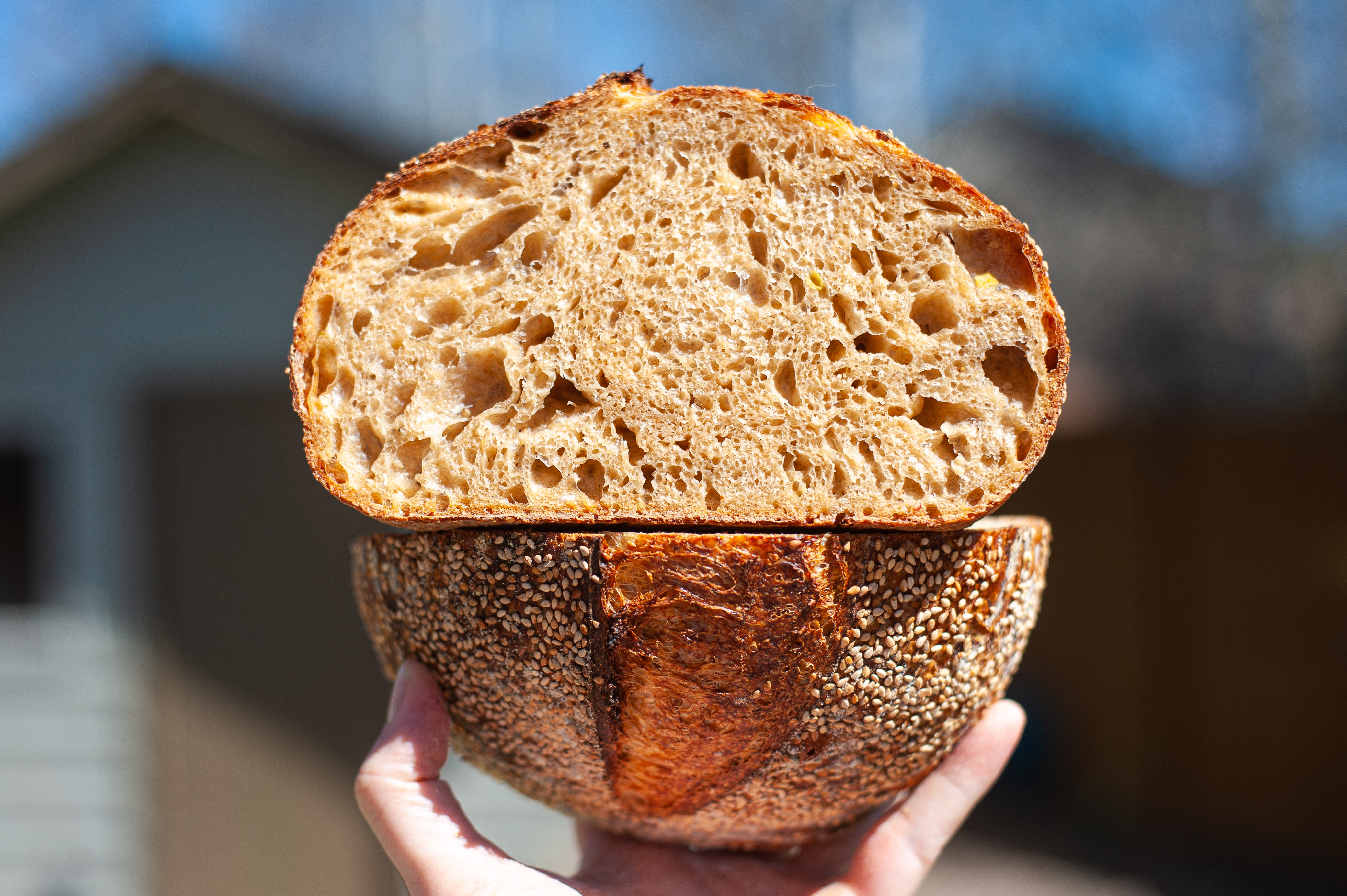
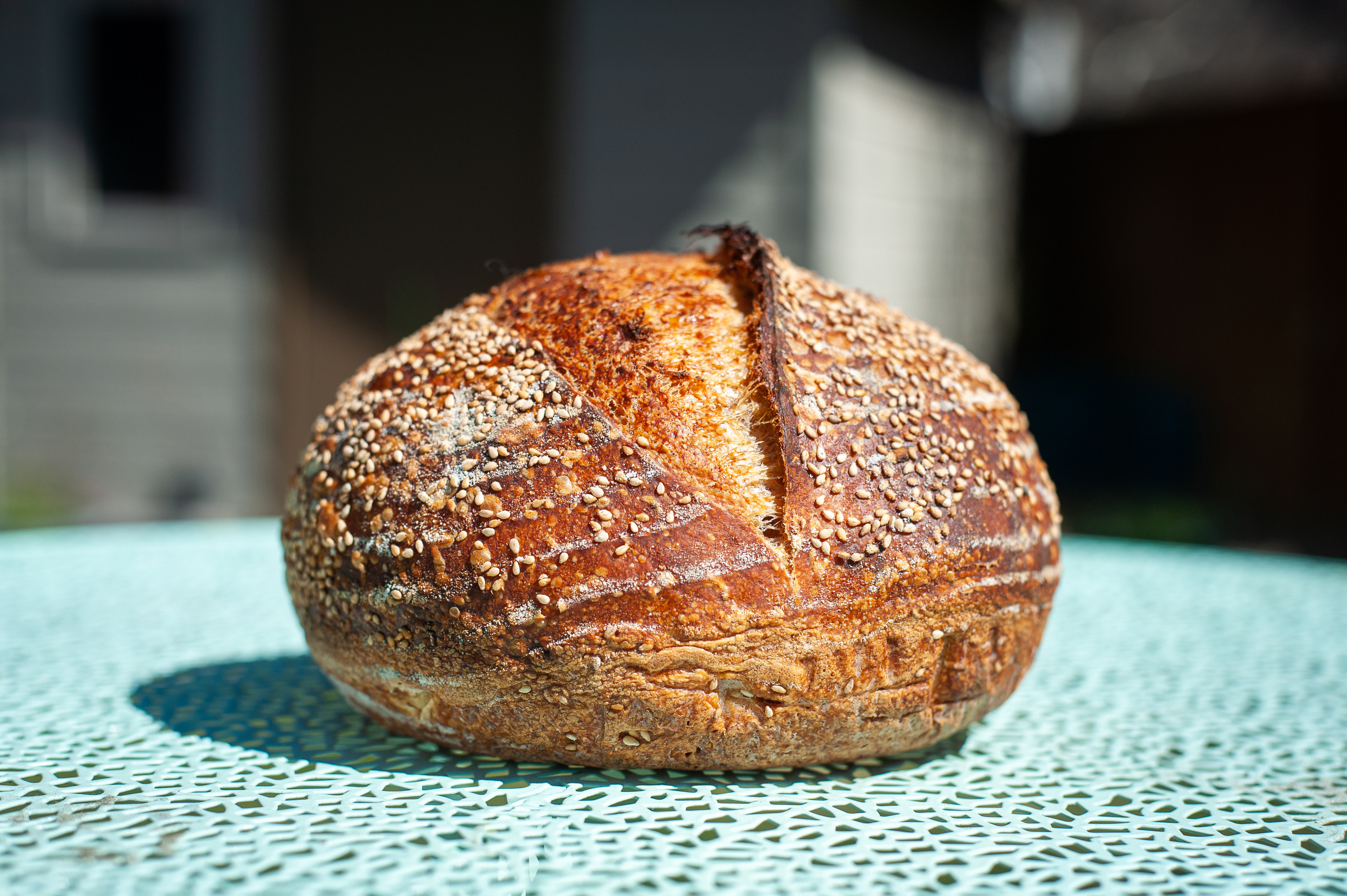
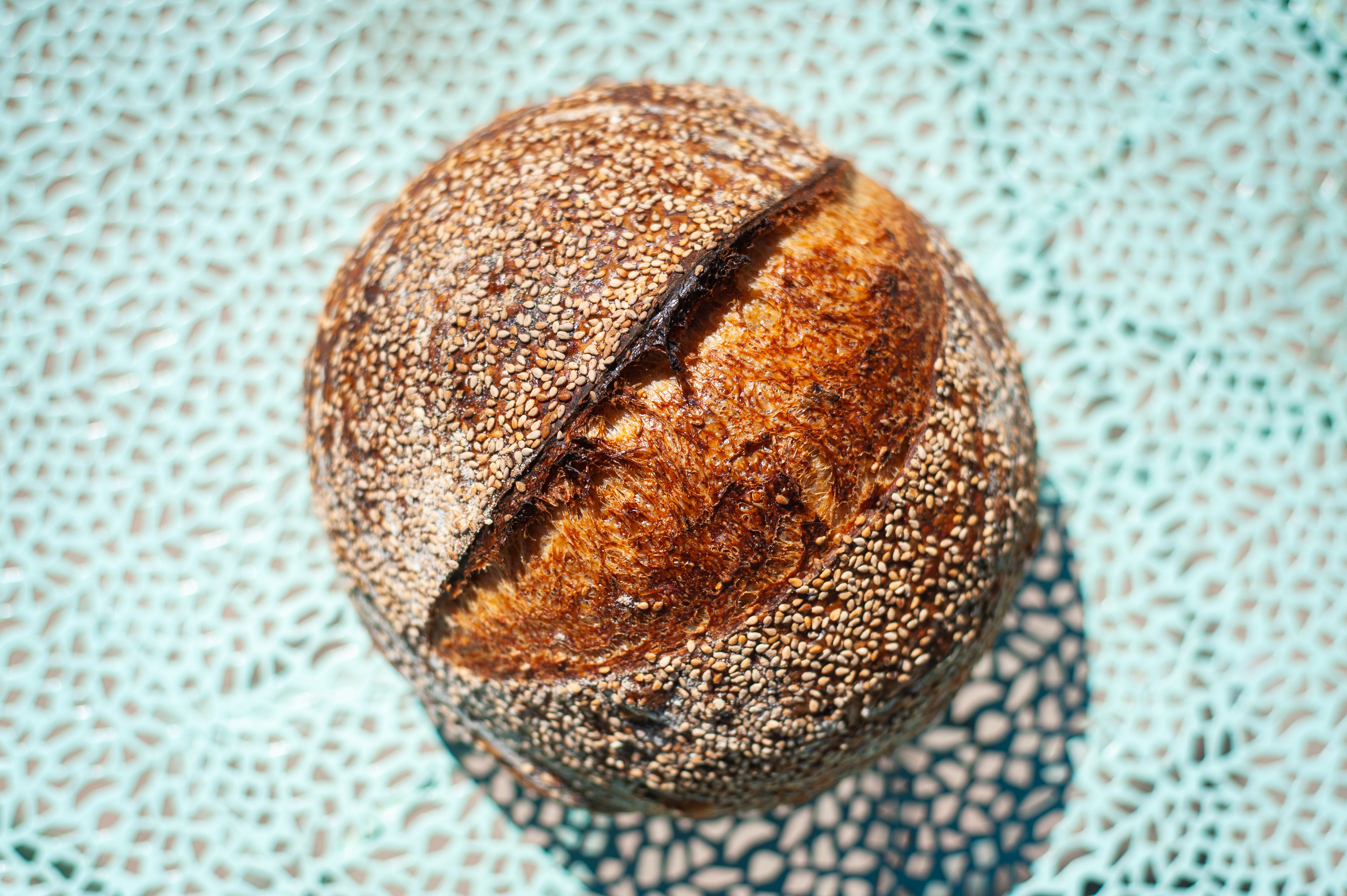



- Joined
- Mar 18, 2012
- Messages
- 2,418
- Reaction score
- 3,060
That description sounds amazing!Kimchi sourdough w/ scallion, sesame, and fish sauce salt. I'd definitely use more of all except the sesame next time (maybe as much as 50-60% kimchi juice, it was only 100g or 25% this time):



Beernik
Well-Known Member
Cranberry, poppyseed, & hemp seed NY style bagels using a stiff levain. Better than my last two attempts but still needs more rise and less water.
I make them on the small side. The recipe says it makes 10. I always try to get a dozen.
The crust has an almost cracker taste.
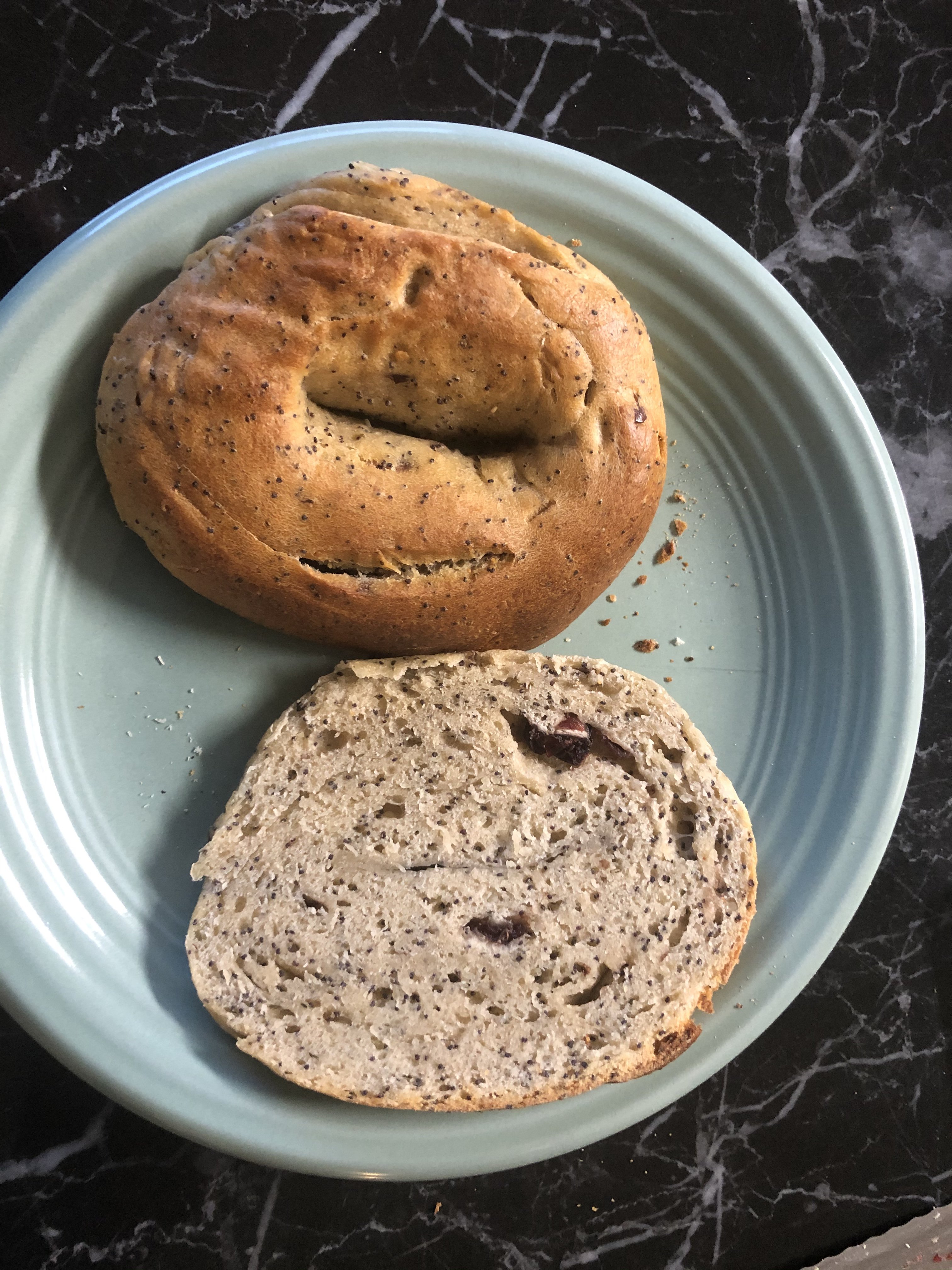
I make them on the small side. The recipe says it makes 10. I always try to get a dozen.
The crust has an almost cracker taste.

I thought I would try making bread for the first time since I'm stuck at home. All I could get was all purpose flour, bleached I think, and I had to use some beer yeast slurry because there was no bread yeast in the store. I made a 1 cup flour "starter" with it and let it go for a day. Then mixed up a batch of no-knead bread with some oats I had and let it rest 24 hours. Surprisingly it didn't suck...

I owe that to the YouTube channel Artisan Bread with Steve though. Some really good easy to follow videos on there.

I owe that to the YouTube channel Artisan Bread with Steve though. Some really good easy to follow videos on there.
TandemTails
Well-Known Member
looks like it worked really well! good job improvising with what you had on handI thought I would try making bread for the first time since I'm stuck at home. All I could get was all purpose flour, bleached I think, and I had to use some beer yeast slurry because there was no bread yeast in the store. I made a 1 cup flour "starter" with it and let it go for a day. Then mixed up a batch of no-knead bread with some oats I had and let it rest 24 hours. Surprisingly it didn't suck...
View attachment 676197
I owe that to the YouTube channel Artisan Bread with Steve though. Some really good easy to follow videos on there.
looks like it worked really well! good job improvising with what you had on hand
Thanks! I'm just a bit confused why it looks like brown bread instead of white.
View attachment 674879 A couple 50 50 ap and stone ground whole wheat loaves. My wife asked me to make these smallish loaves again. The bread slices are good size for the kids. Turns out one dough batch makes two pizzas and two small loaves, so a good combo to rely on for me.View attachment 674876 View attachment 674877
Very nice. But every time I see your counters my first reaction is "I don't remember posting that"!
Oh Hell Yeah!!!View attachment 675552
cheese muffins were a hit.
deadwolfbones
Well-Known Member
Seed & nut sourdough w/ pecans, sesame, flax, and pepitas. Baked in my 6qt DO this time and as a result it's much flatter. Still delicious, tho.
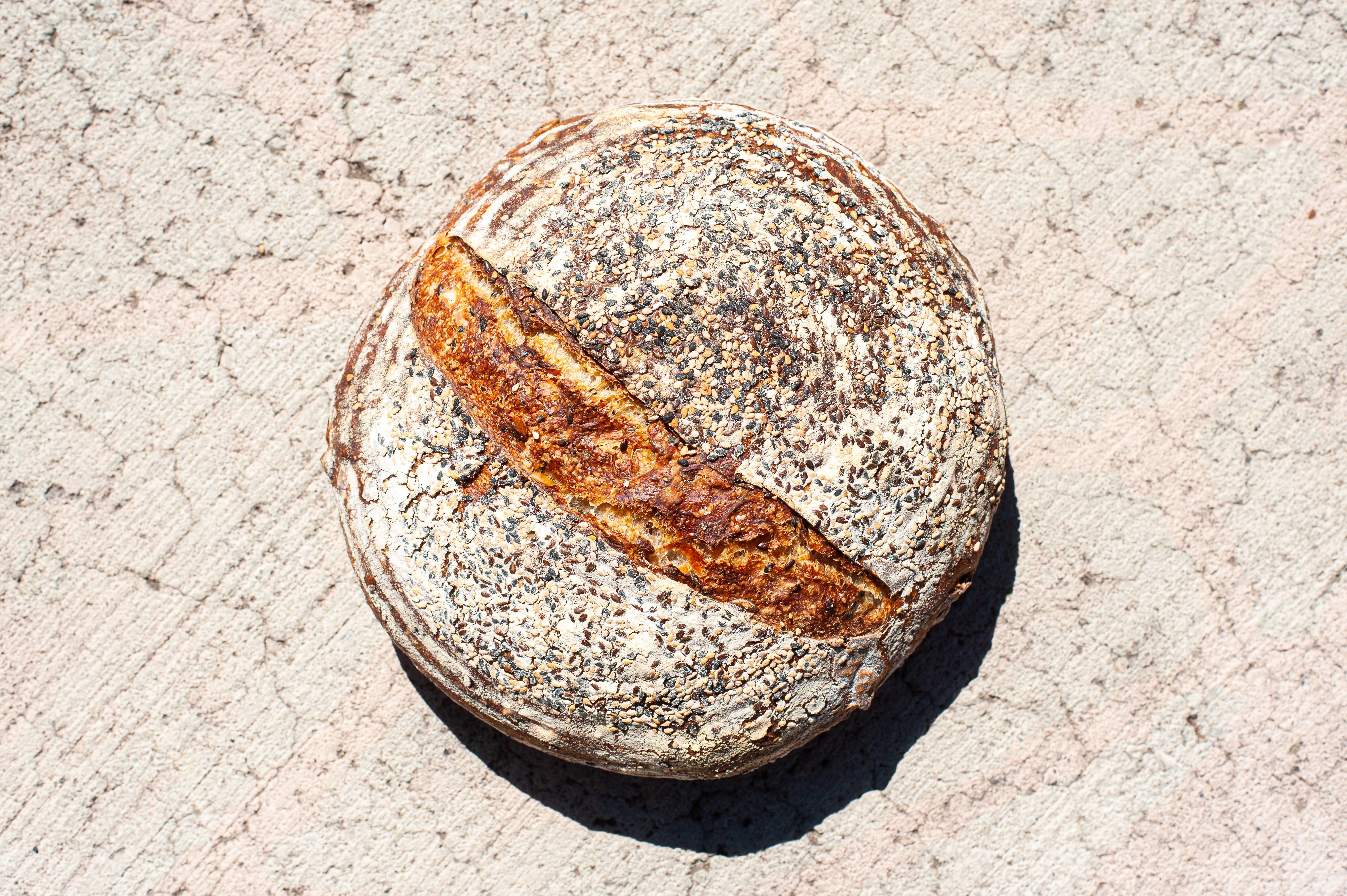
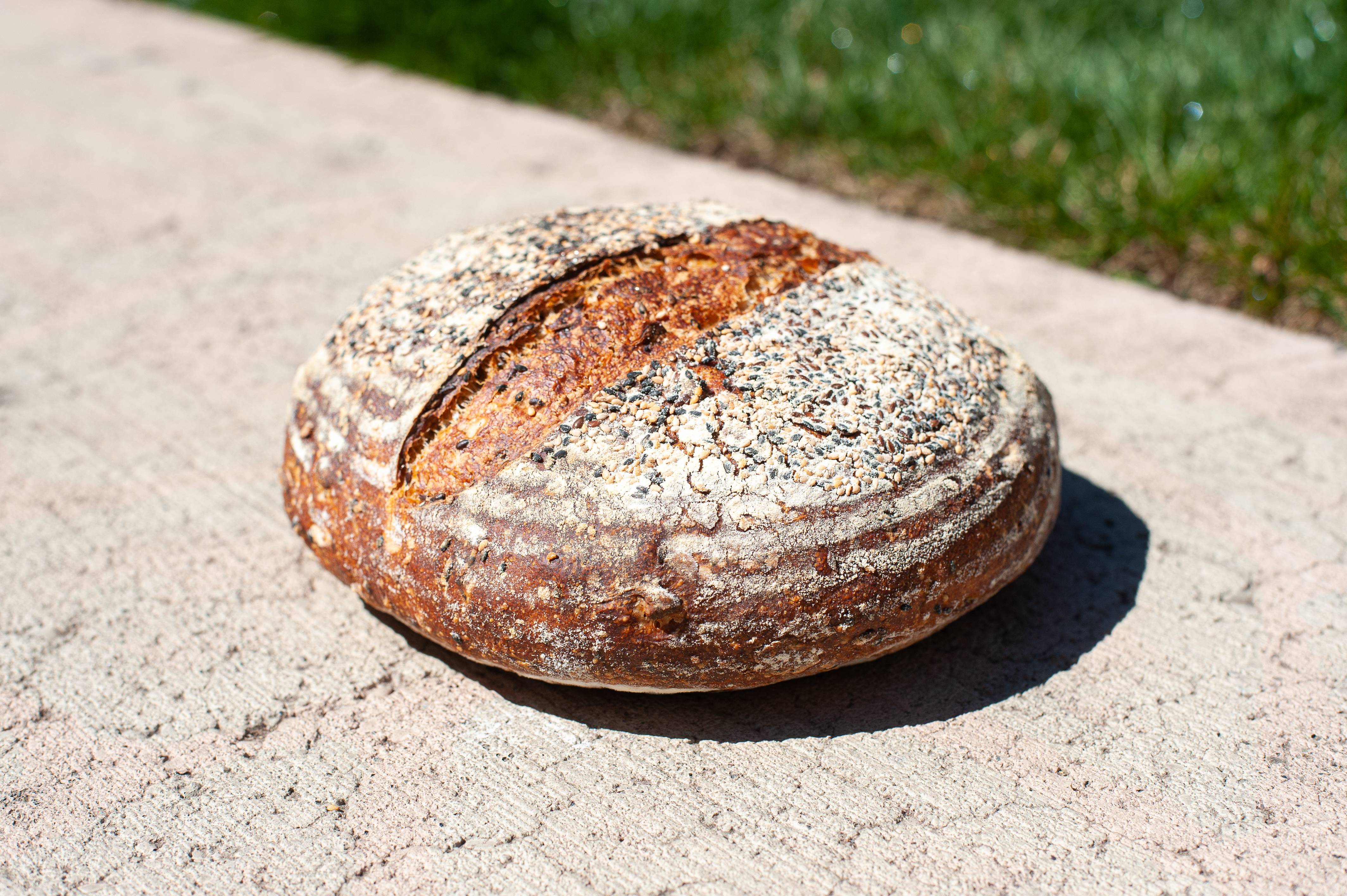
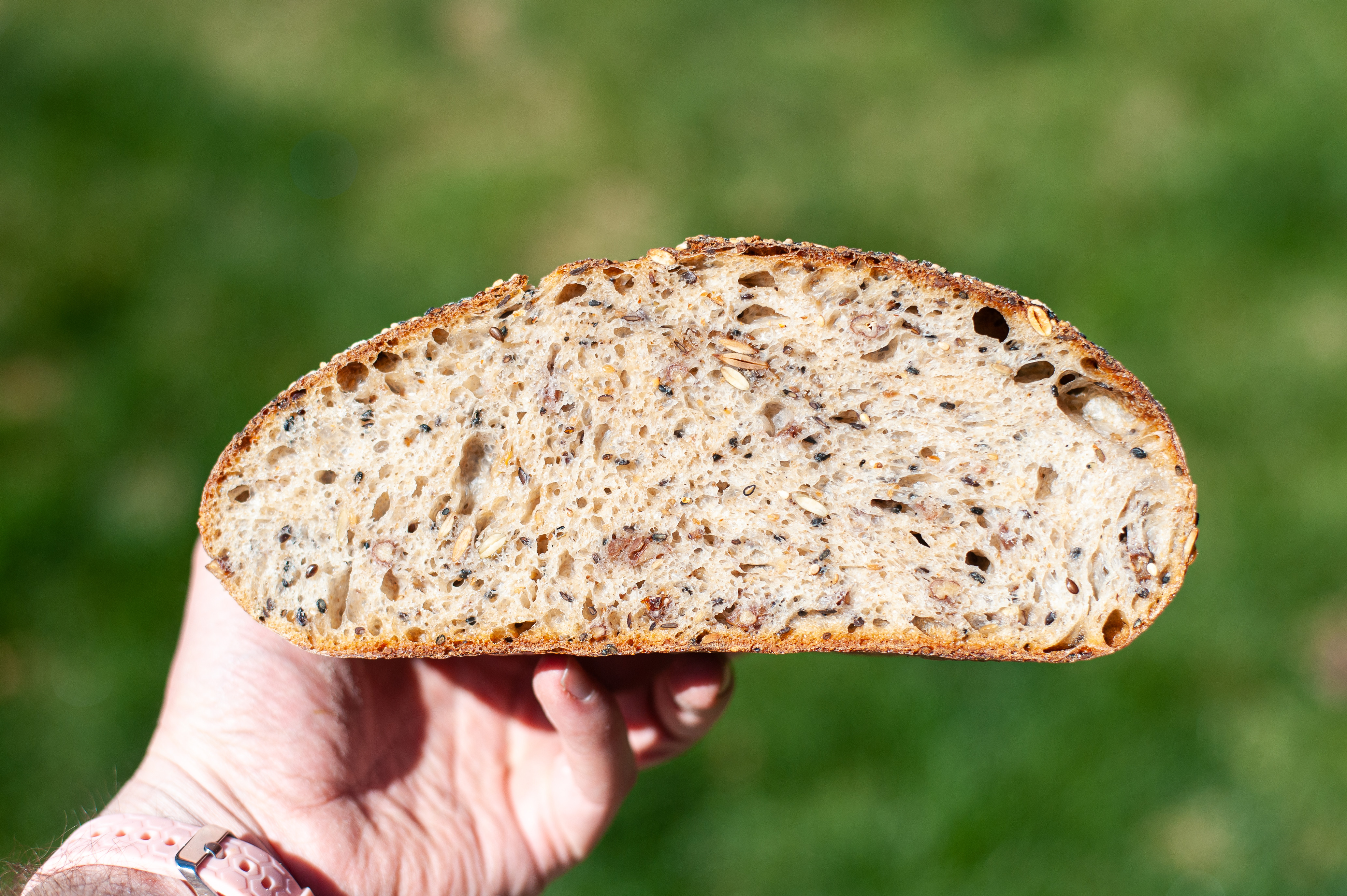



TandemTails
Well-Known Member
I love the taste of pretzels but had been putting off making any since it was really hard to find baking soda lately. Well, I finally found some and decided to make some pretzel buns to go with dinner last night.
This recipe uses bakers yeast and only takes about 2.5 hours from start to finish. It was extremely easy and I ended up with 8 pretzel buns perfectly sized for hamburgers.
The ingredients and a rough method are below. For full instructions and more pics, check out my bread blog: https://alegrebread.com/2020/04/19/pretzel-buns/
Dough
* 3 3/4 cups AP flour
* 1/4 oz (about 2 tsp) yeast
* 2 tsp sea salt
* 1 1/4 cups water @ ~110'F
* 3 Tbsp melted butter
Rough Method
1. Mix all ingredients in a stand mixer w/ dough hook attachment for a few minutes.
2. Knead by hand for 2-3 minutes.
3. Let ferment in a warm area for 60-90 minutes, or until doubled.
4. Punch down and form into 8-10 balls
5. Let balls proof for another 20 minutes.
6. Meanwhile, preheat oven to 425'F and get the water bath started w/ 4.25 cups water and 3 Tbsp baking soda
7. Boil 2 buns at a time, 30 seconds per side
8. Let buns dry on a wire rack, scoring them and adding any toppings (I did pretzel salt)
9. Bake on a parchment lined sheet for 16-18 minutes
10. Let cool for 15-20 minutes then enjoy!
Bonus Pics
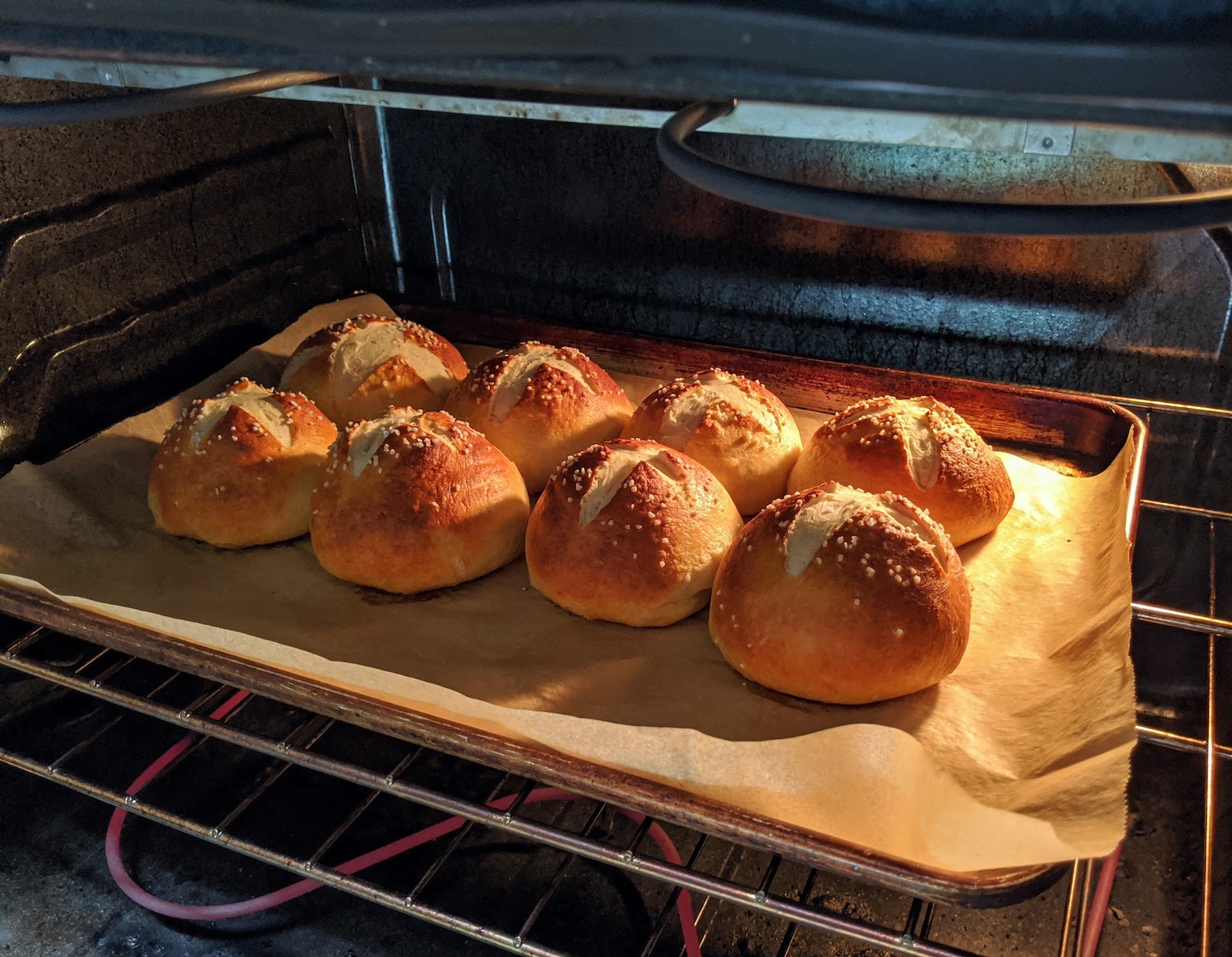
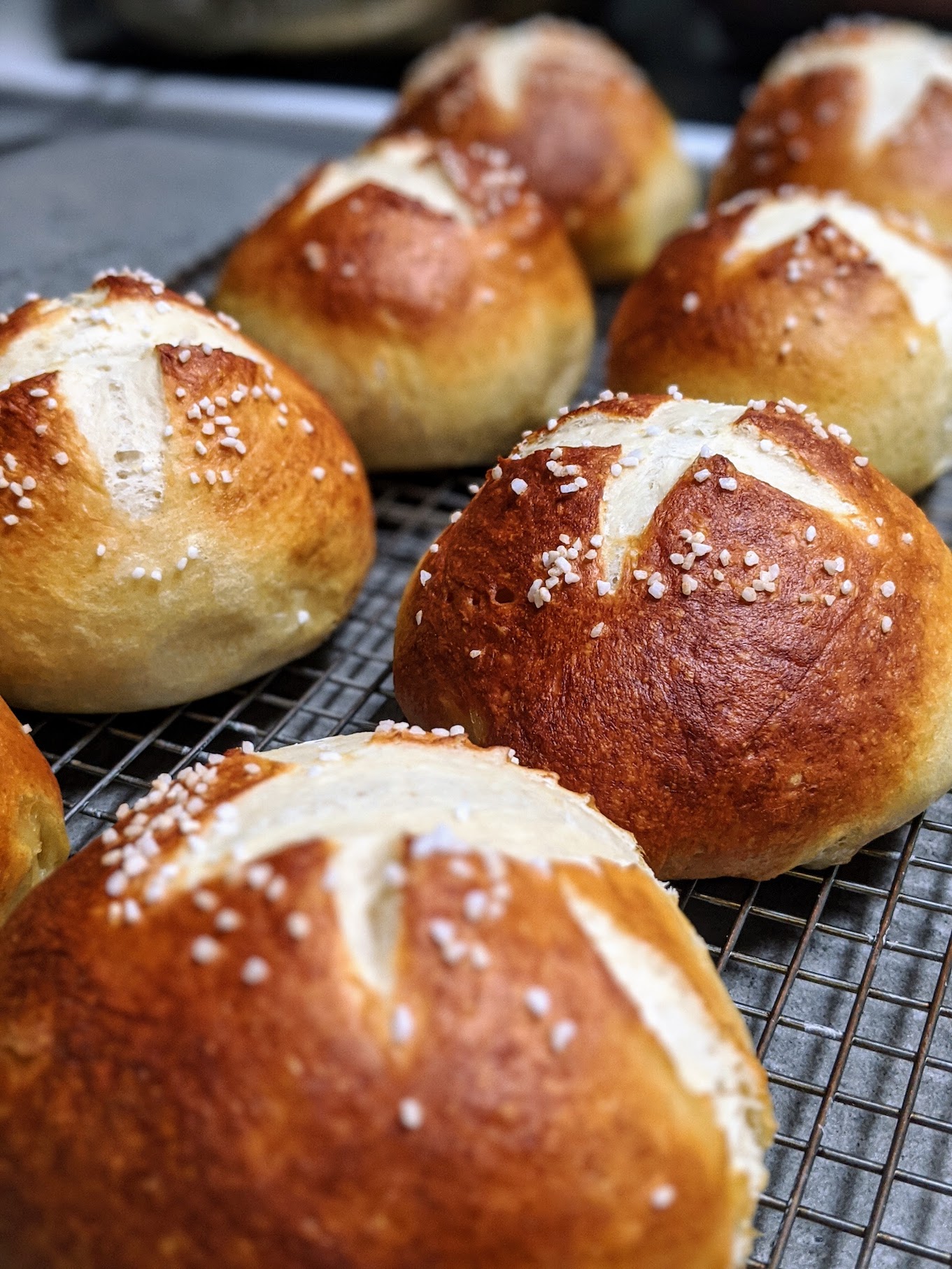
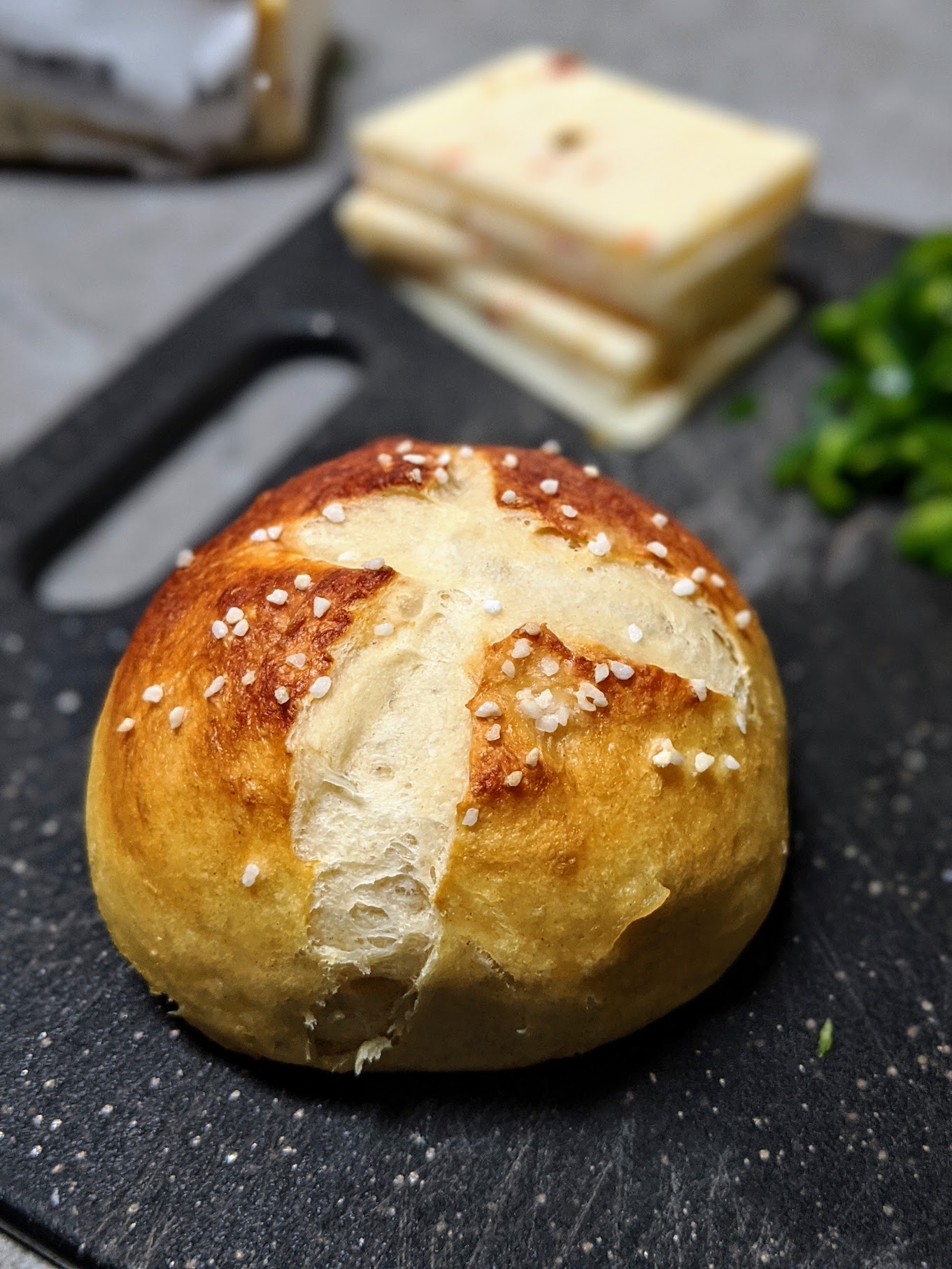
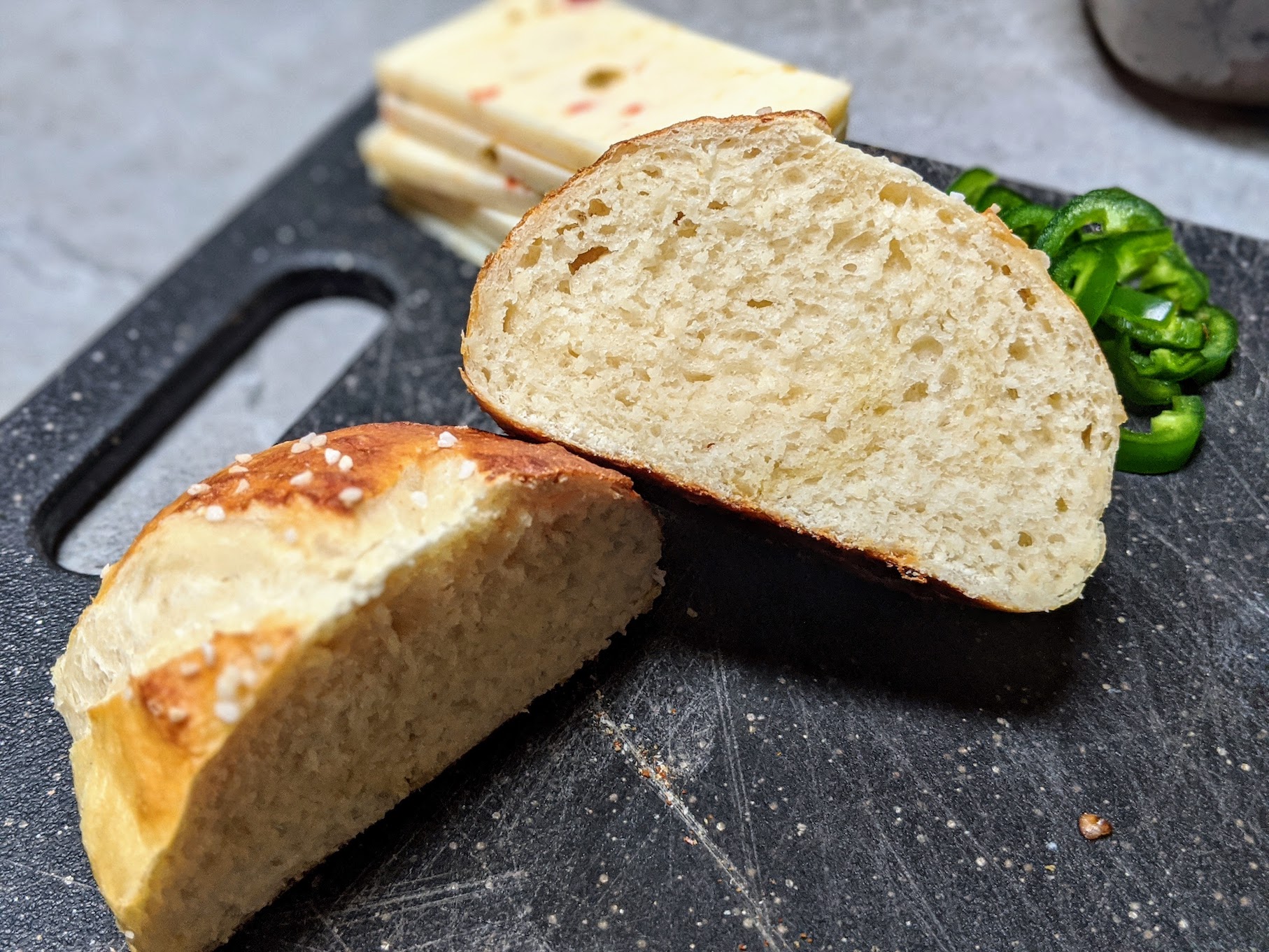
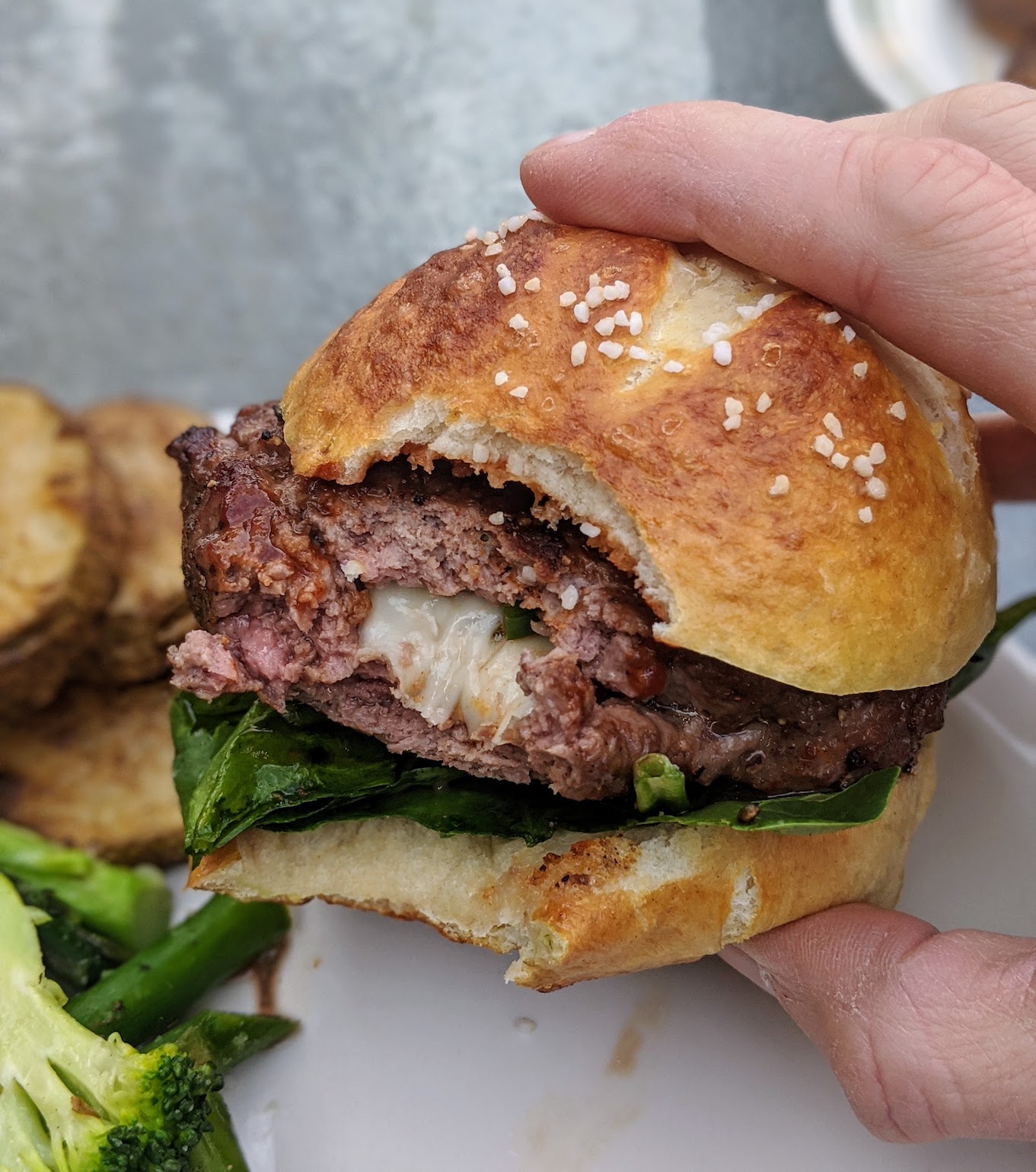
This recipe uses bakers yeast and only takes about 2.5 hours from start to finish. It was extremely easy and I ended up with 8 pretzel buns perfectly sized for hamburgers.
The ingredients and a rough method are below. For full instructions and more pics, check out my bread blog: https://alegrebread.com/2020/04/19/pretzel-buns/
Dough
* 3 3/4 cups AP flour
* 1/4 oz (about 2 tsp) yeast
* 2 tsp sea salt
* 1 1/4 cups water @ ~110'F
* 3 Tbsp melted butter
Rough Method
1. Mix all ingredients in a stand mixer w/ dough hook attachment for a few minutes.
2. Knead by hand for 2-3 minutes.
3. Let ferment in a warm area for 60-90 minutes, or until doubled.
4. Punch down and form into 8-10 balls
5. Let balls proof for another 20 minutes.
6. Meanwhile, preheat oven to 425'F and get the water bath started w/ 4.25 cups water and 3 Tbsp baking soda
7. Boil 2 buns at a time, 30 seconds per side
8. Let buns dry on a wire rack, scoring them and adding any toppings (I did pretzel salt)
9. Bake on a parchment lined sheet for 16-18 minutes
10. Let cool for 15-20 minutes then enjoy!
Bonus Pics







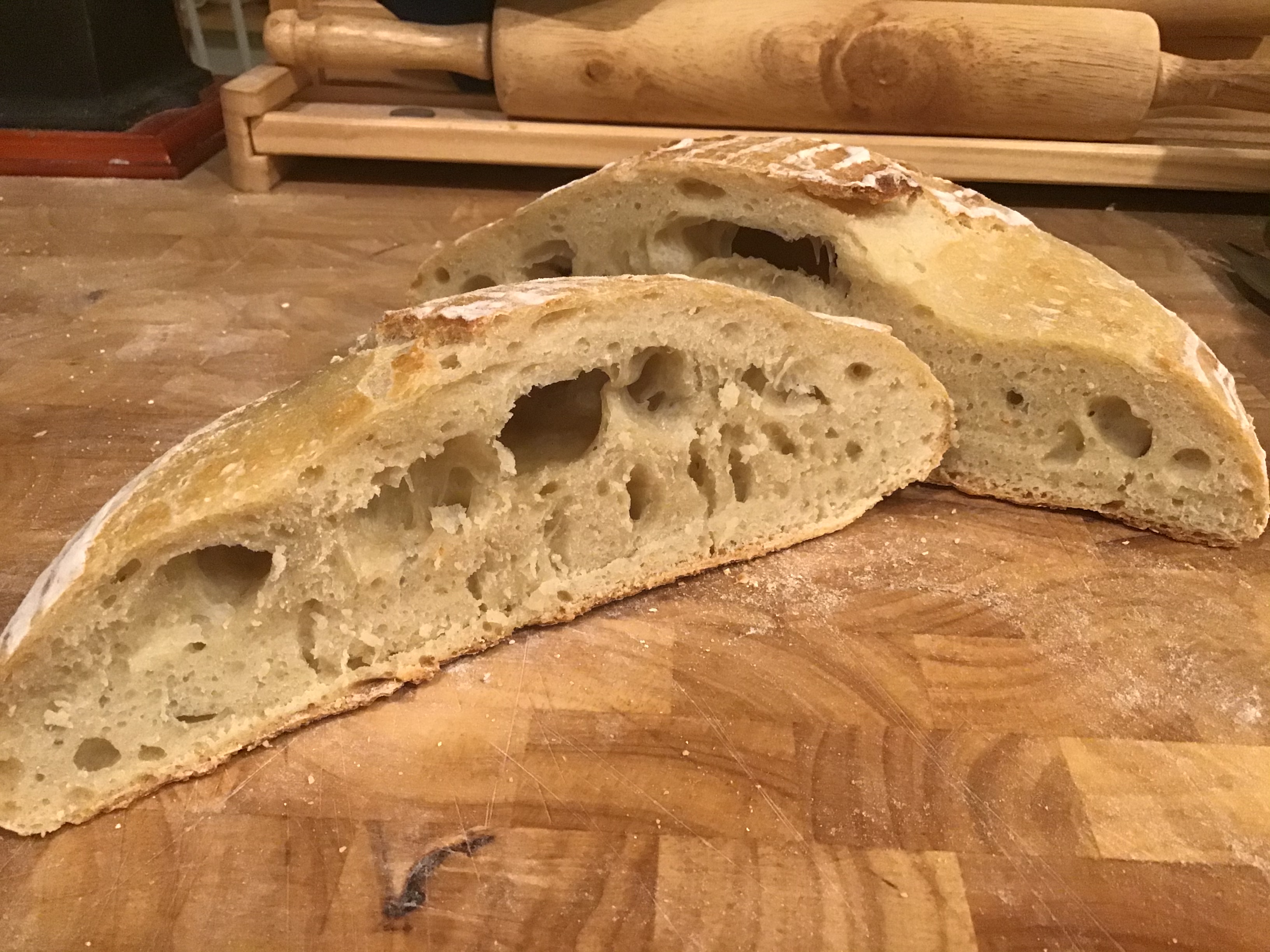
I believe I lost some gas getting it out of the basket prior to placing in the Dutch oven, but it’s tasty.
michaeltrego
Well-Known Member
Bagels
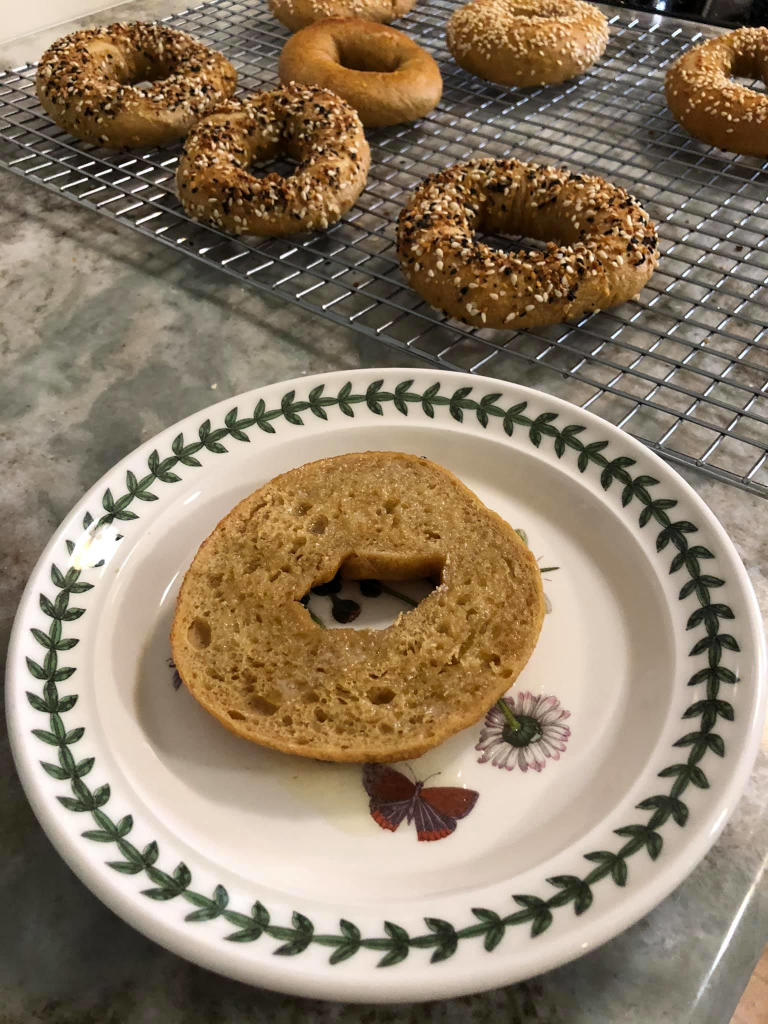
Baguettes

Milk Buns
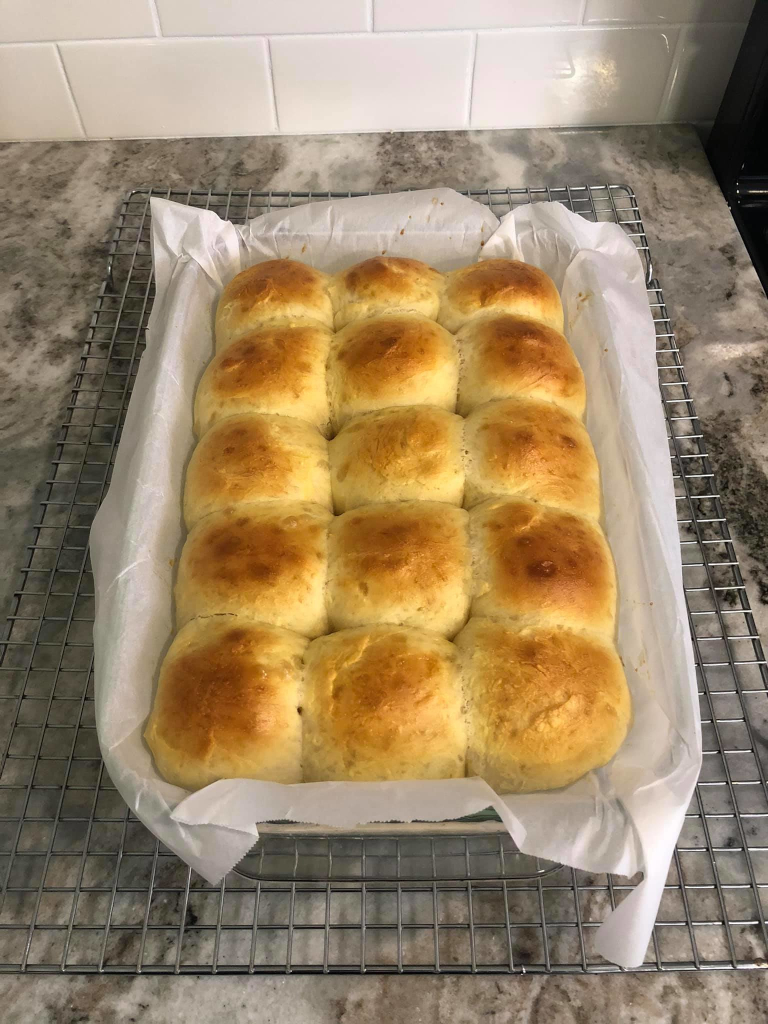

Baguettes

Milk Buns


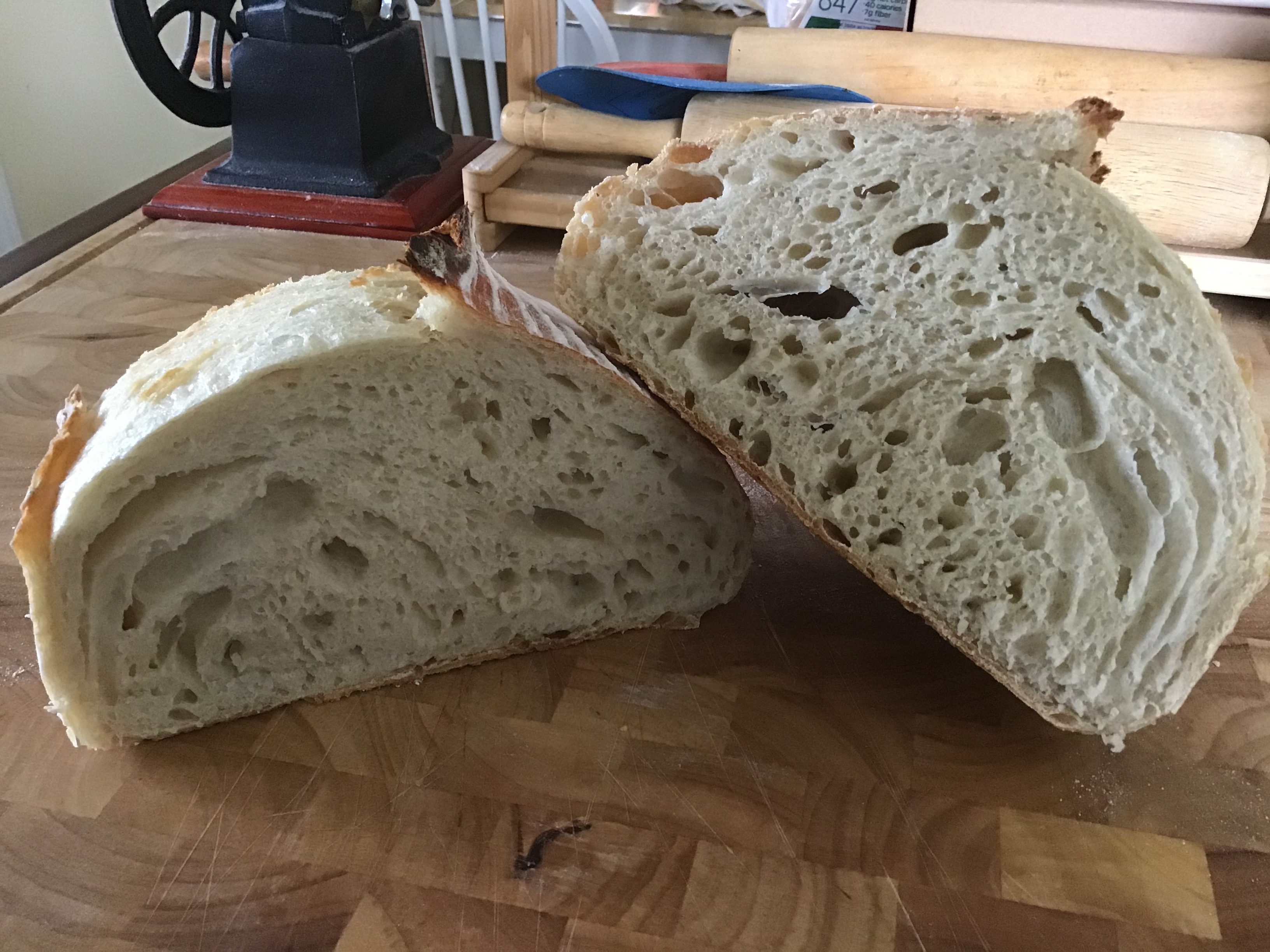
I finally made a loaf that looks pretty good.
TandemTails
Well-Known Member
I had that happen to my first few sourdough loaves. Did you use a sourdough culture or bakers yeast?View attachment 676858 View attachment 676859 View attachment 676860
I believe I lost some gas getting it out of the basket prior to placing in the Dutch oven, but it’s tasty.
It looks like there might have been two issues:
1. You didn't give it enough structure or develop the gluten well enough. This can be accomplished by giving the dough proper stretch + folds within the first 90 minutes of bulk fermentation.
2. You might have over fermented or over proofed it. There are many different variables that go into this, but the biggest ones are ambient temperature and how much yeast you used. The warmer the temp or the more yeast you use, the faster the dough will ferment and proof.
Similar threads
- Replies
- 7
- Views
- 1K
- Replies
- 4
- Views
- 1K

